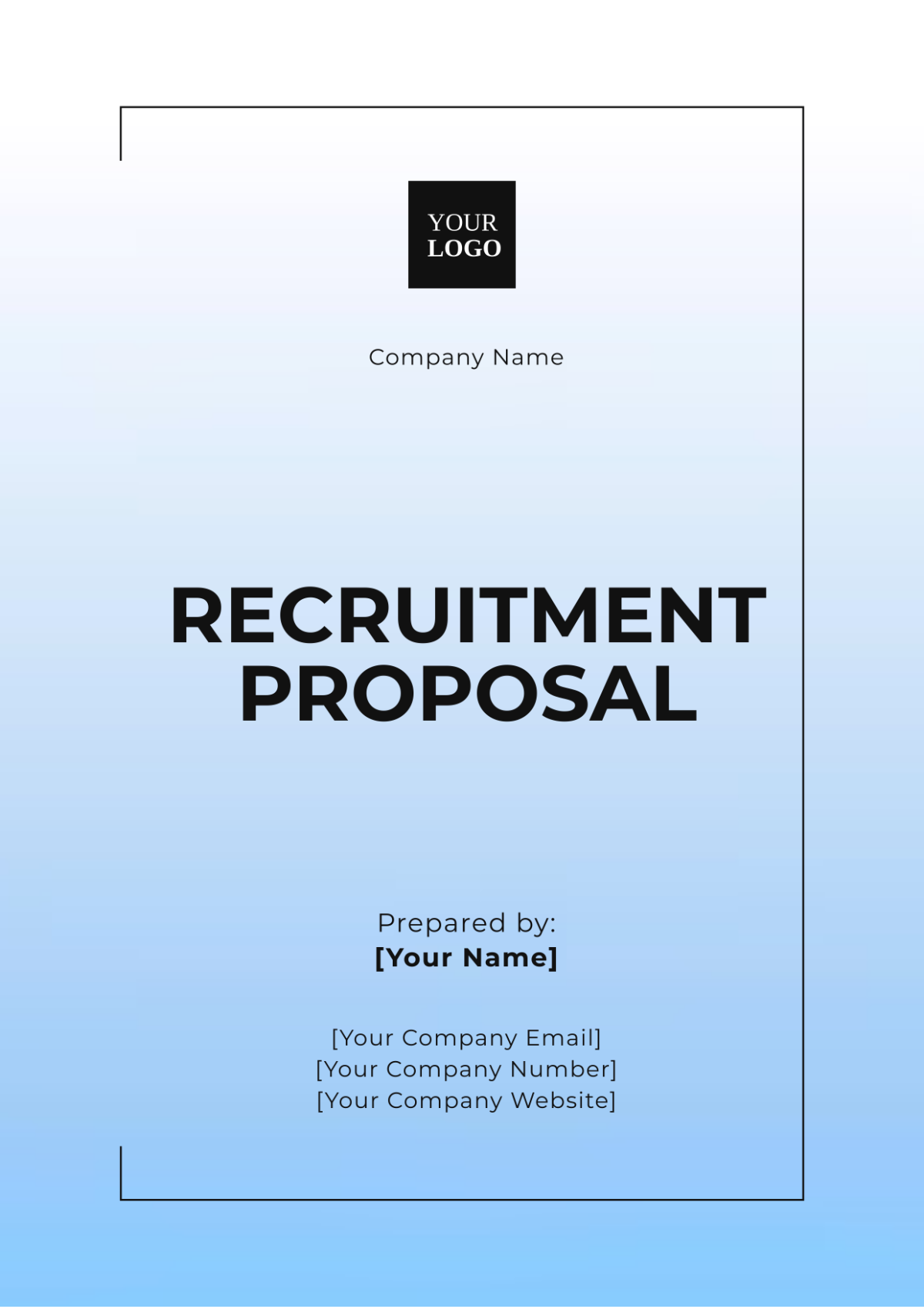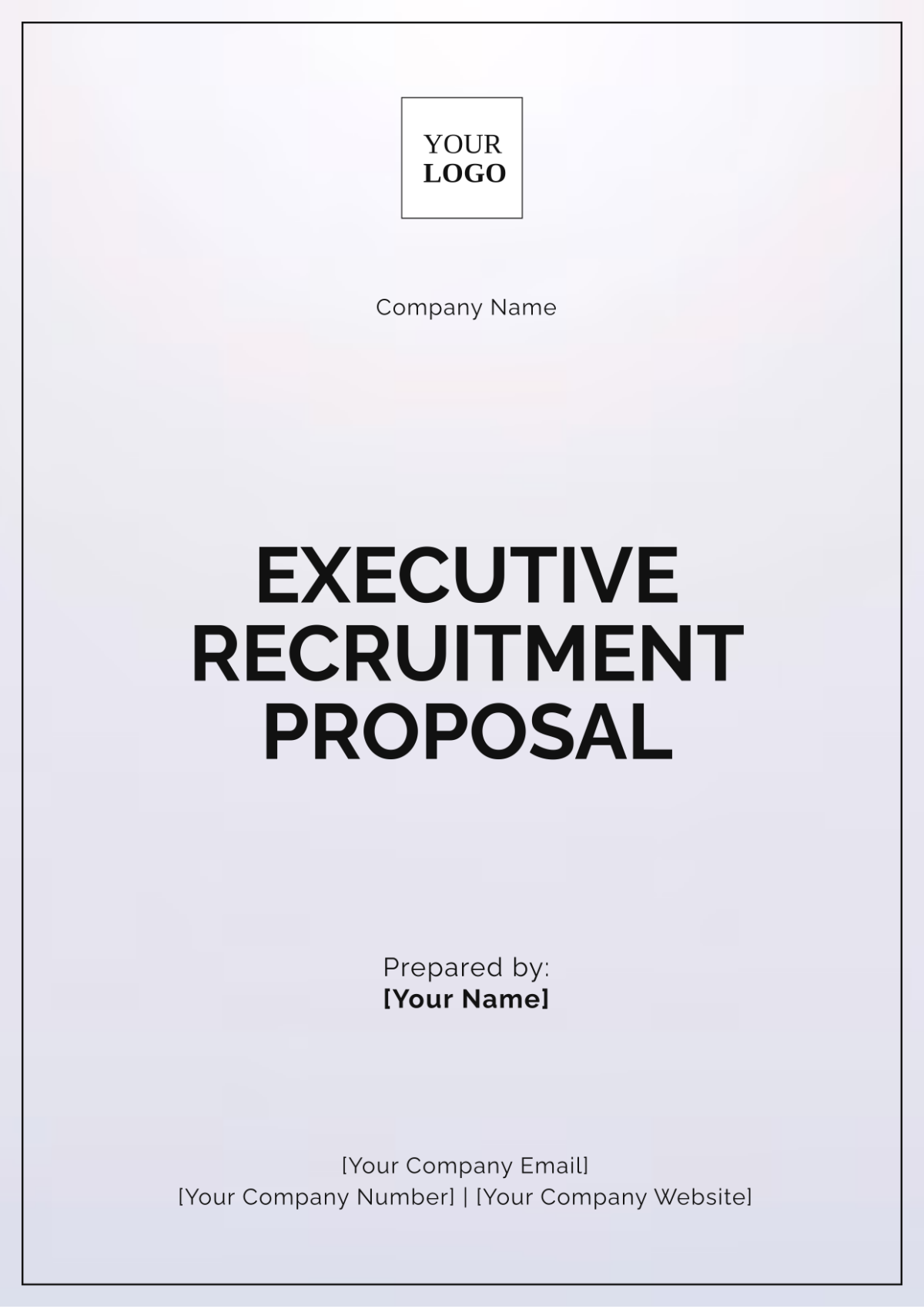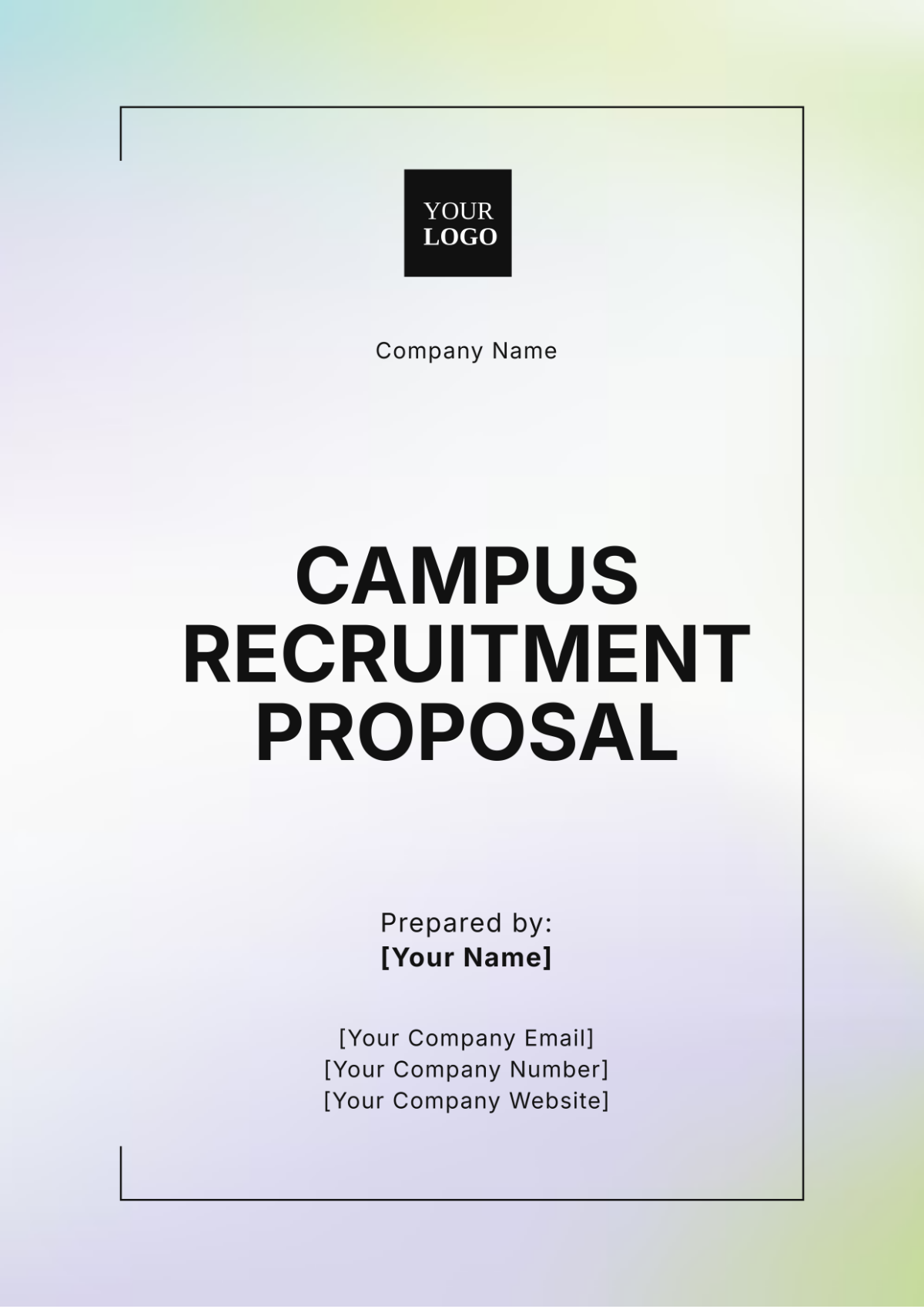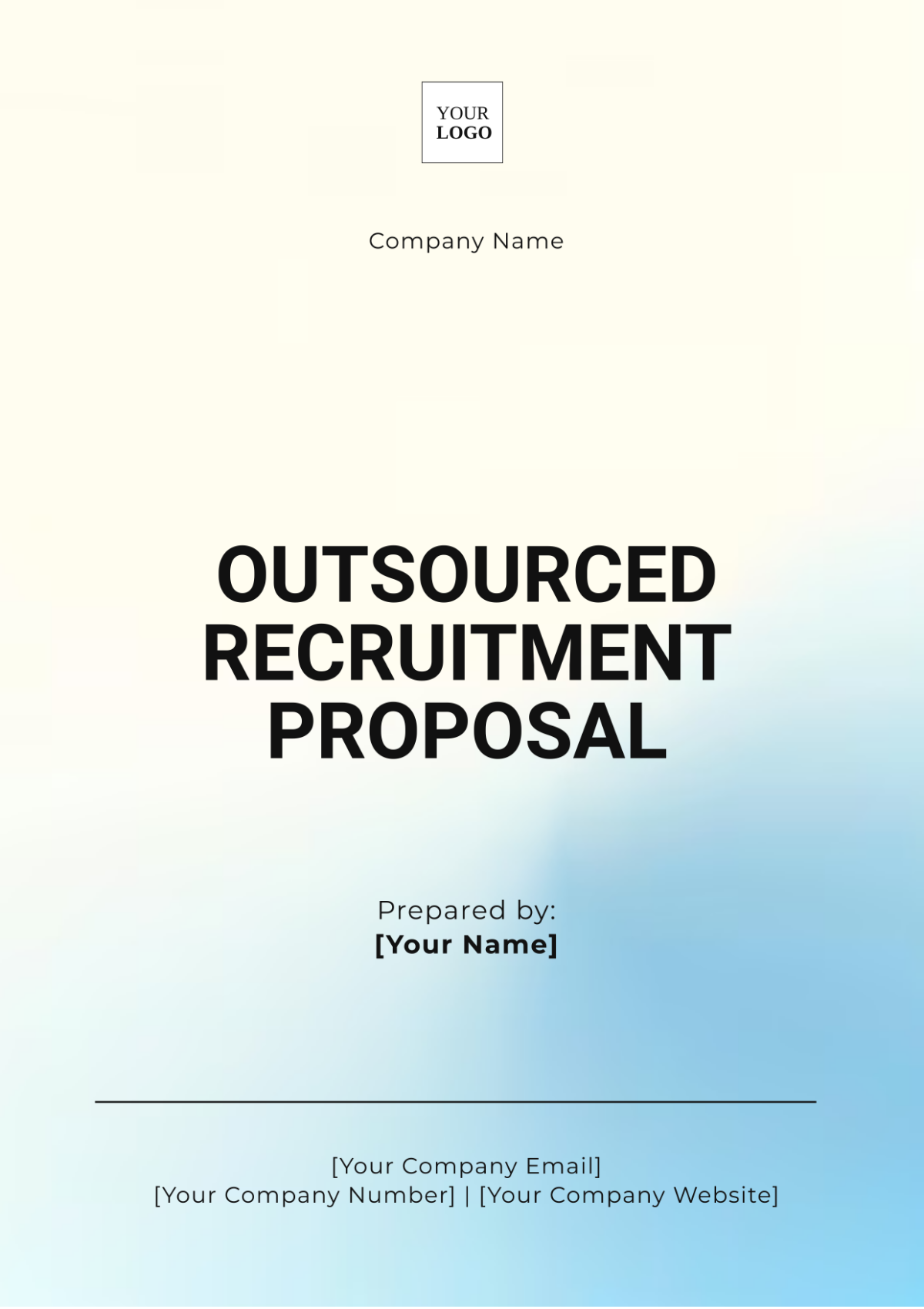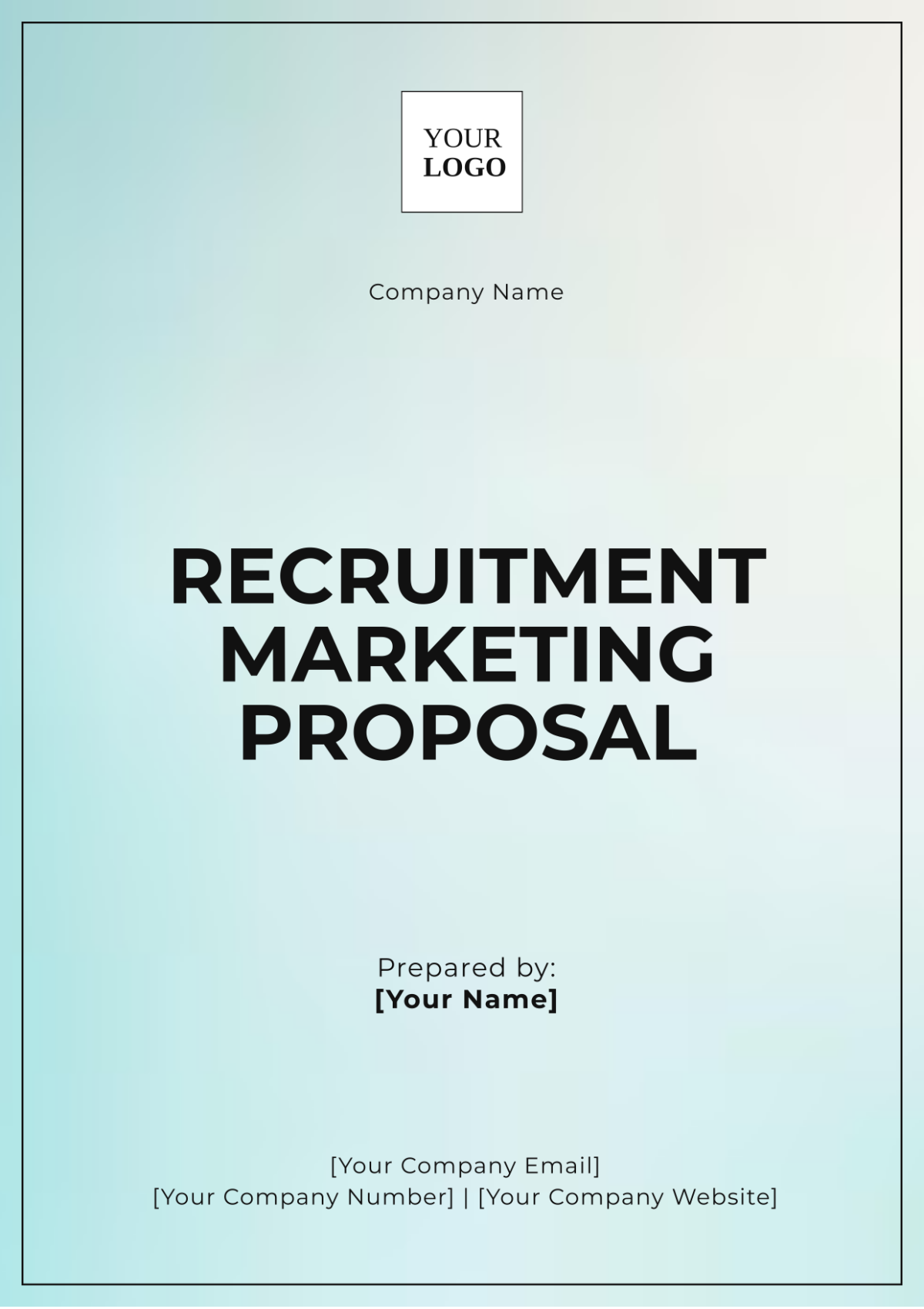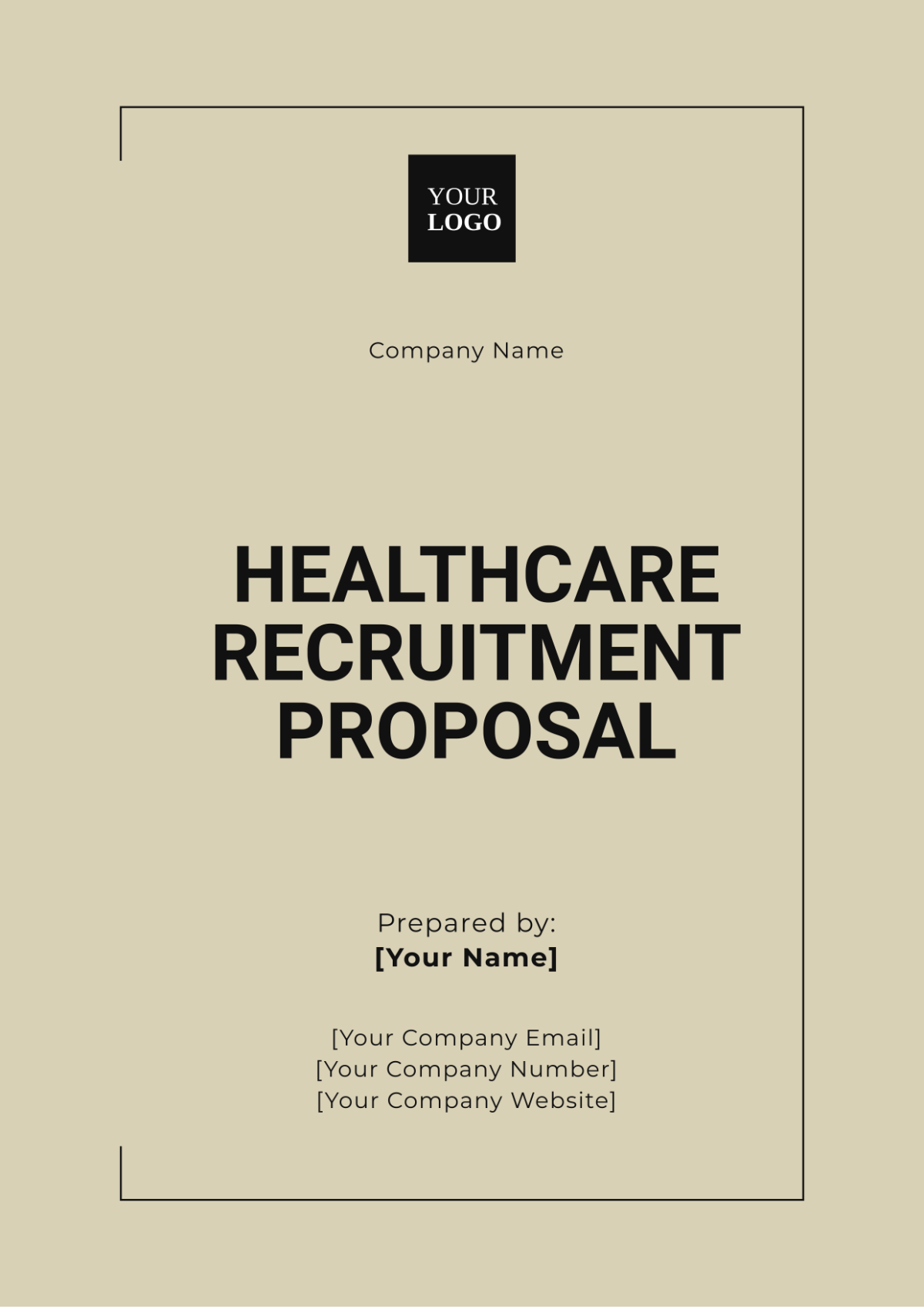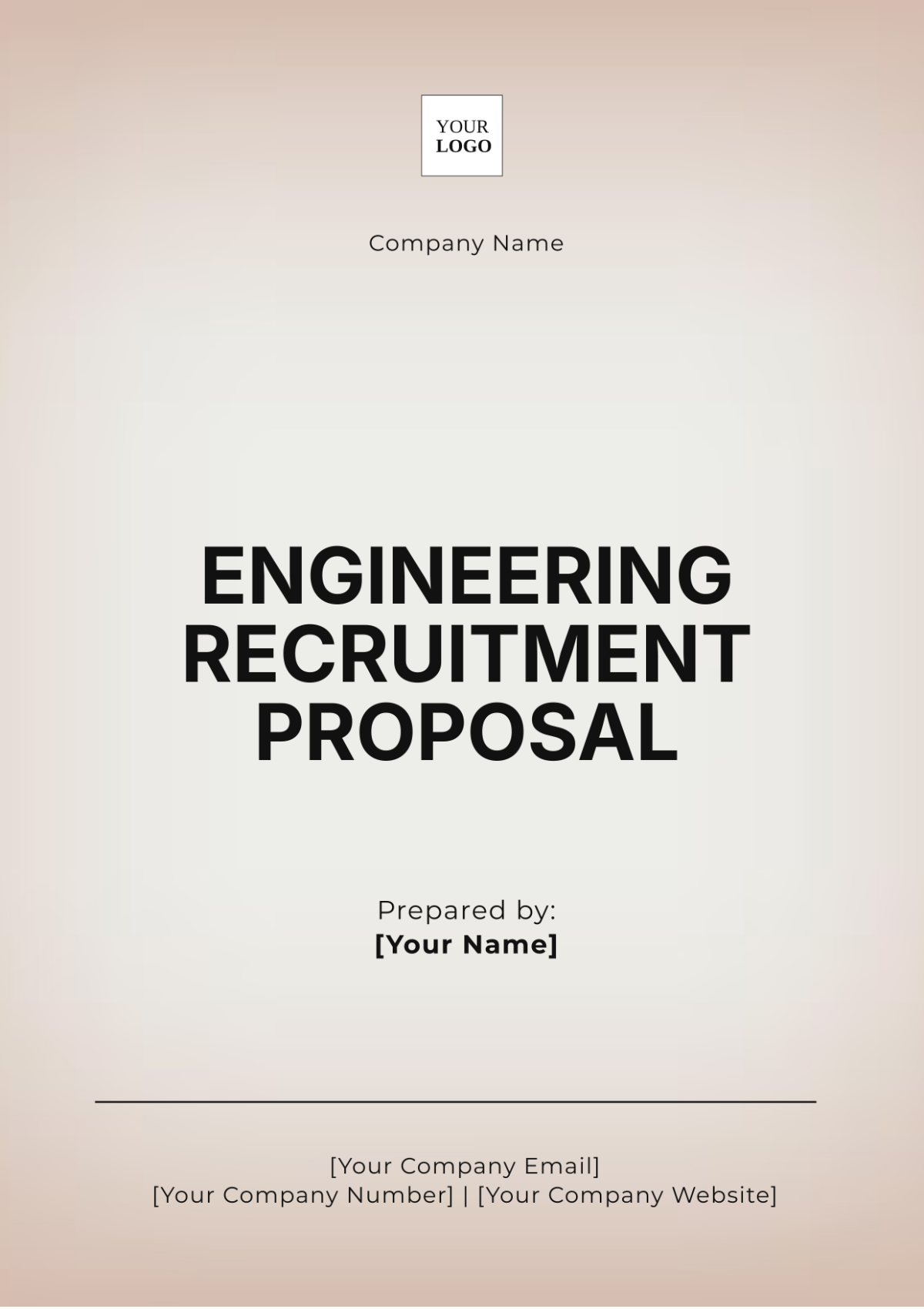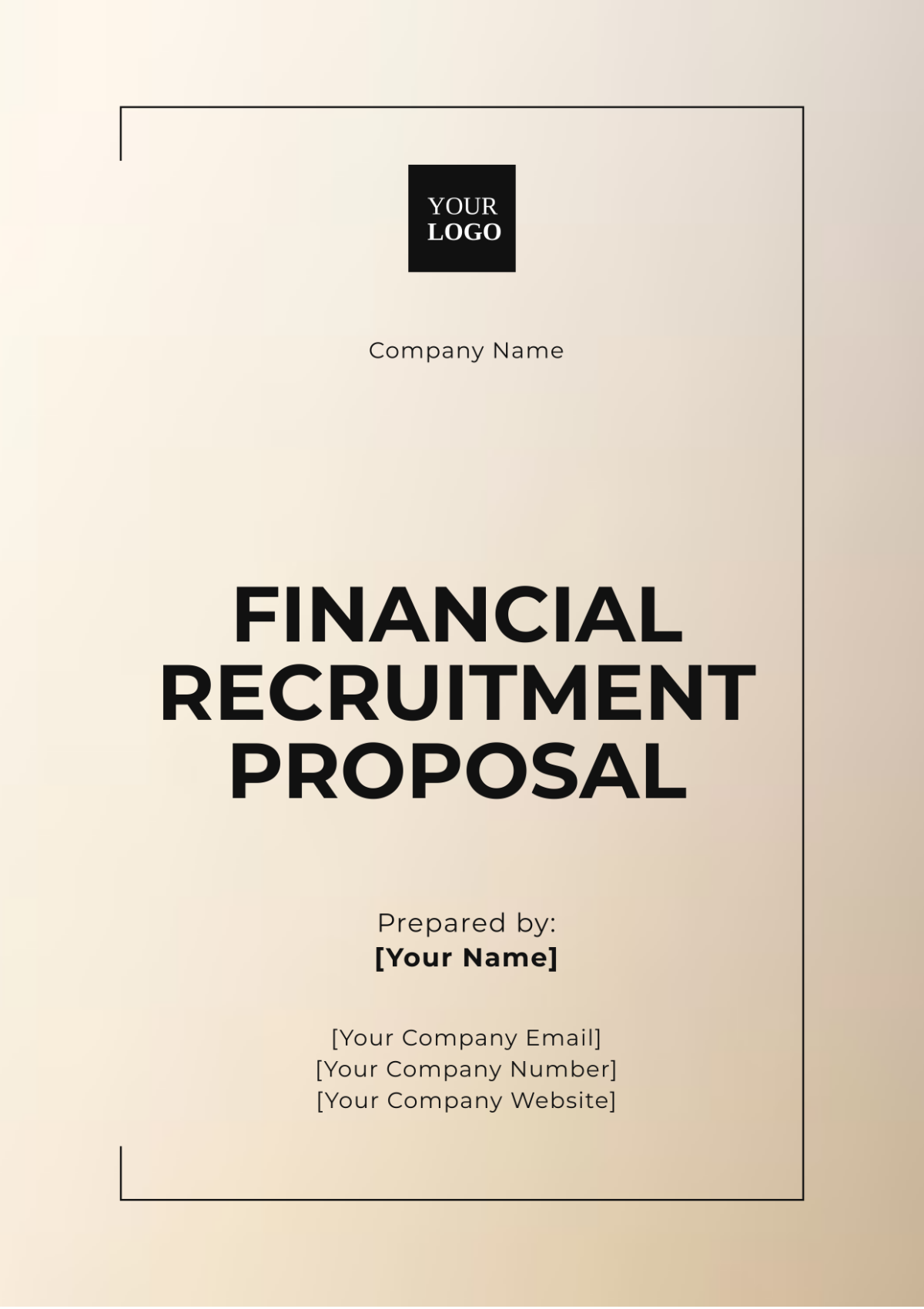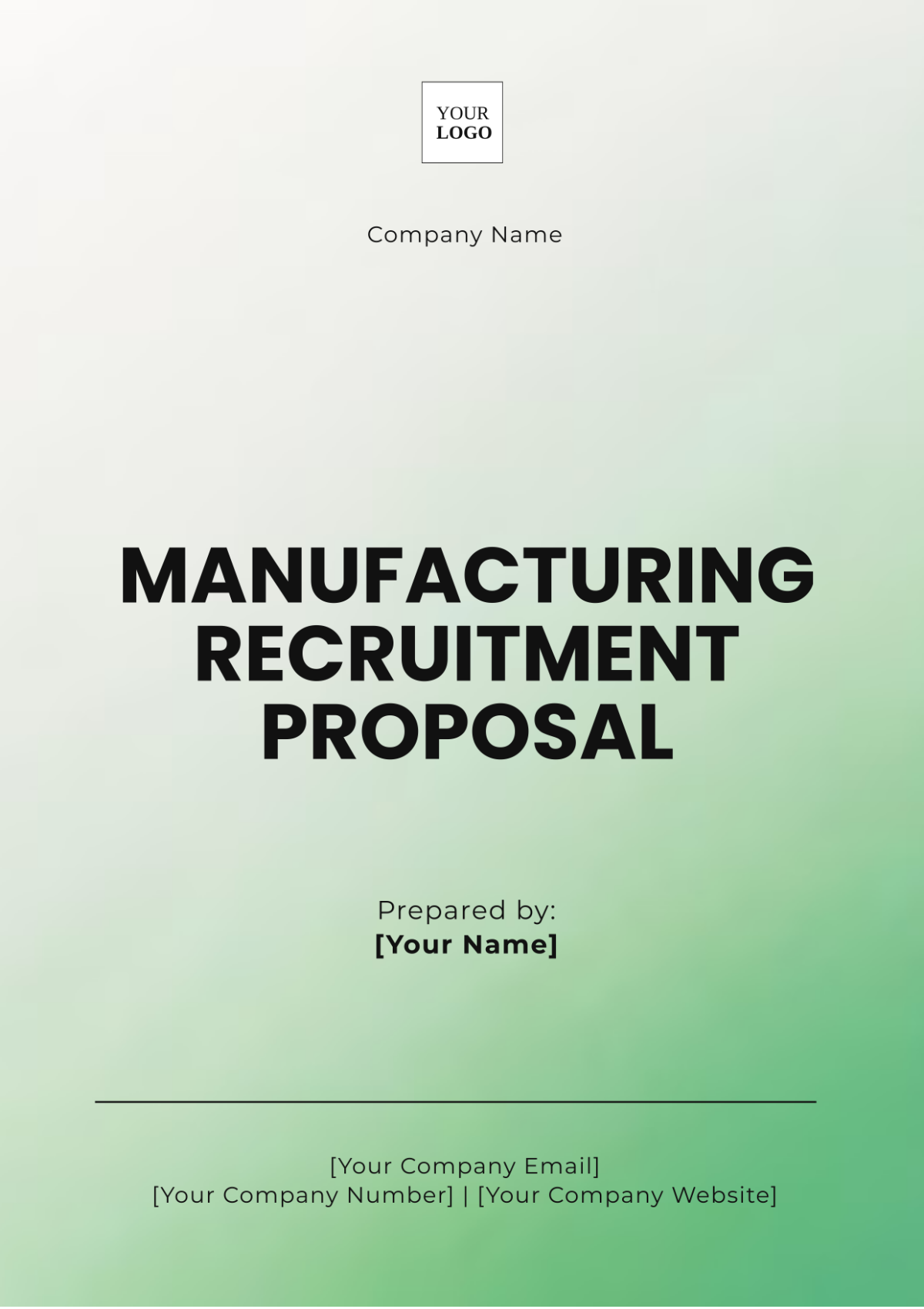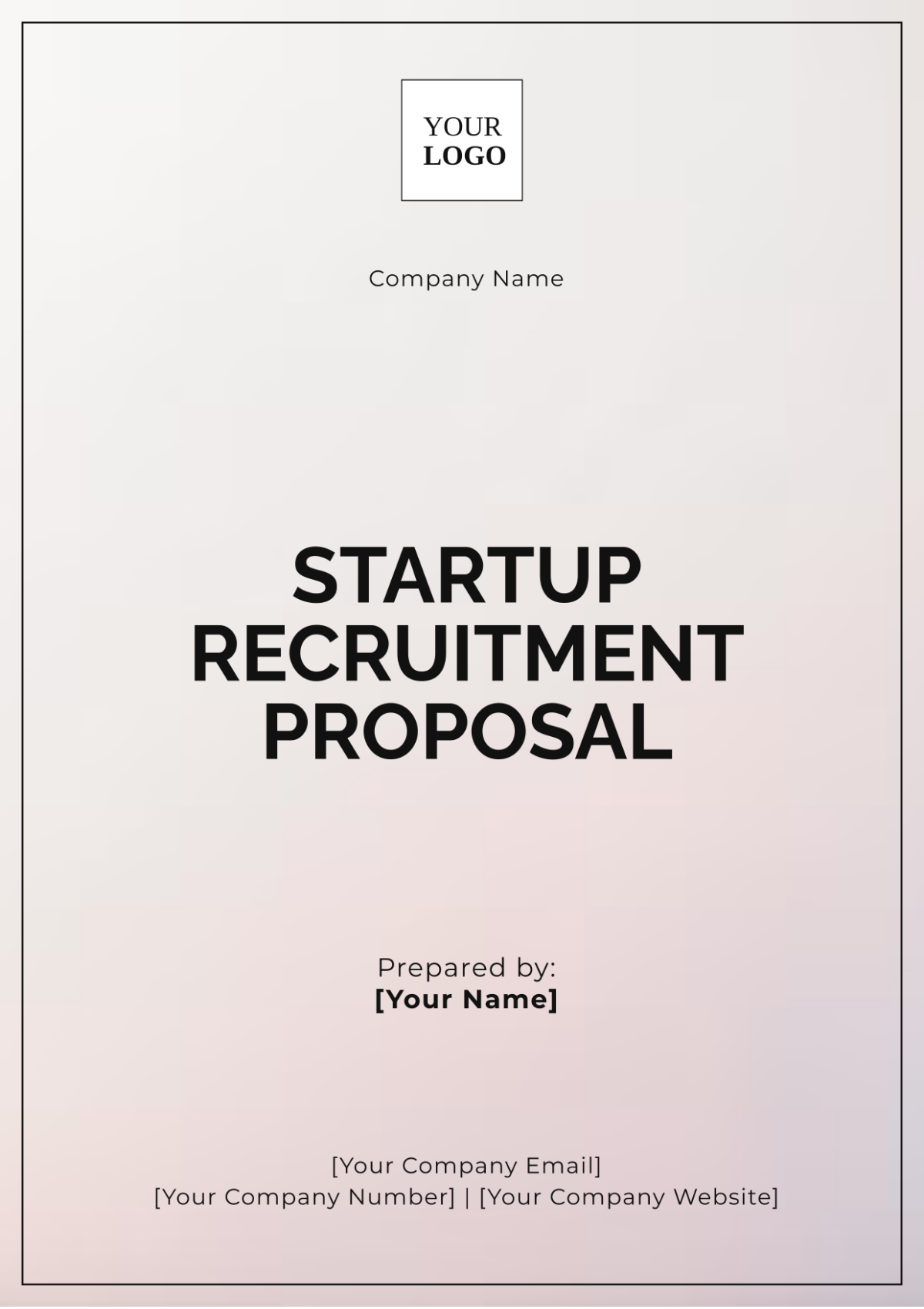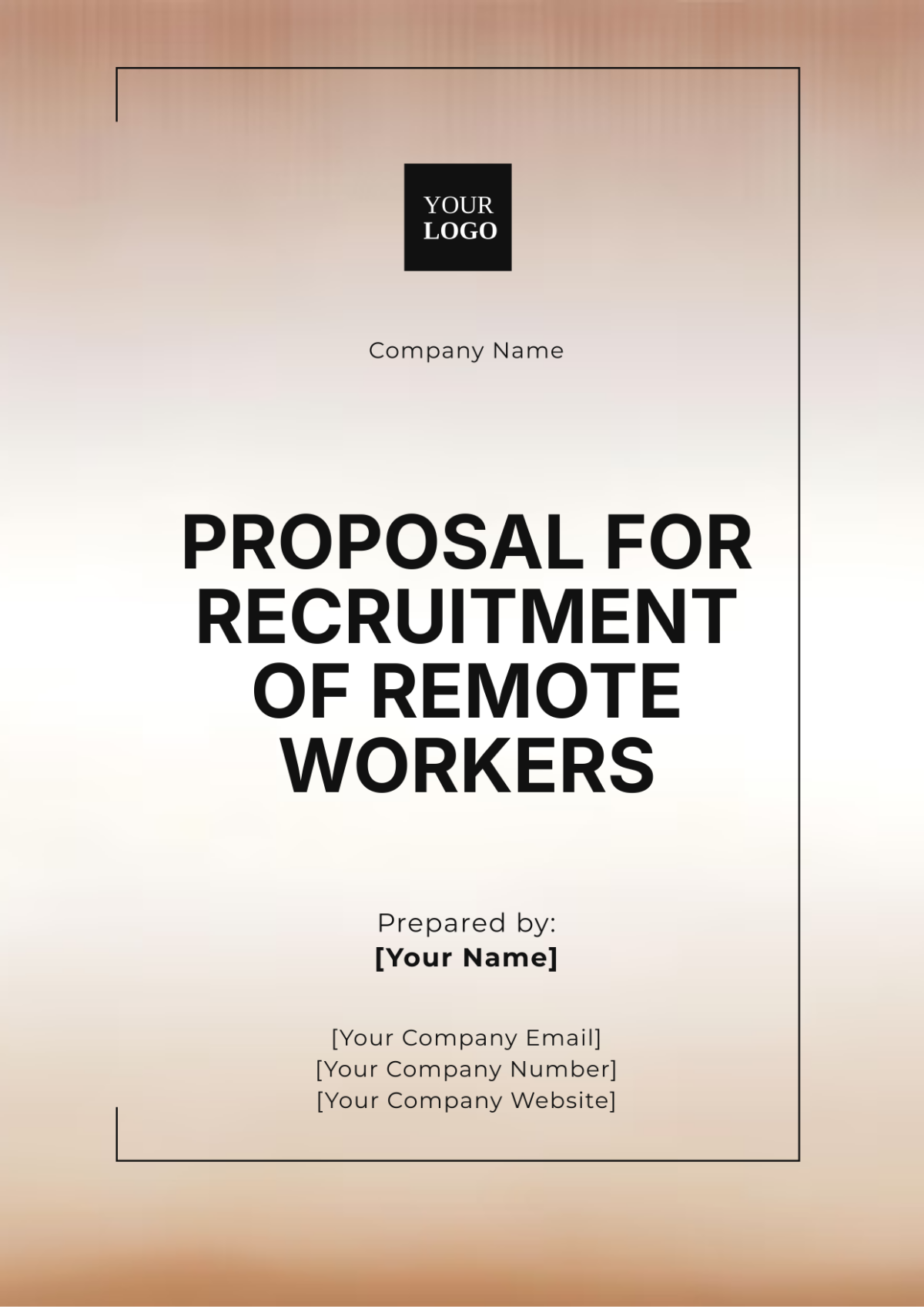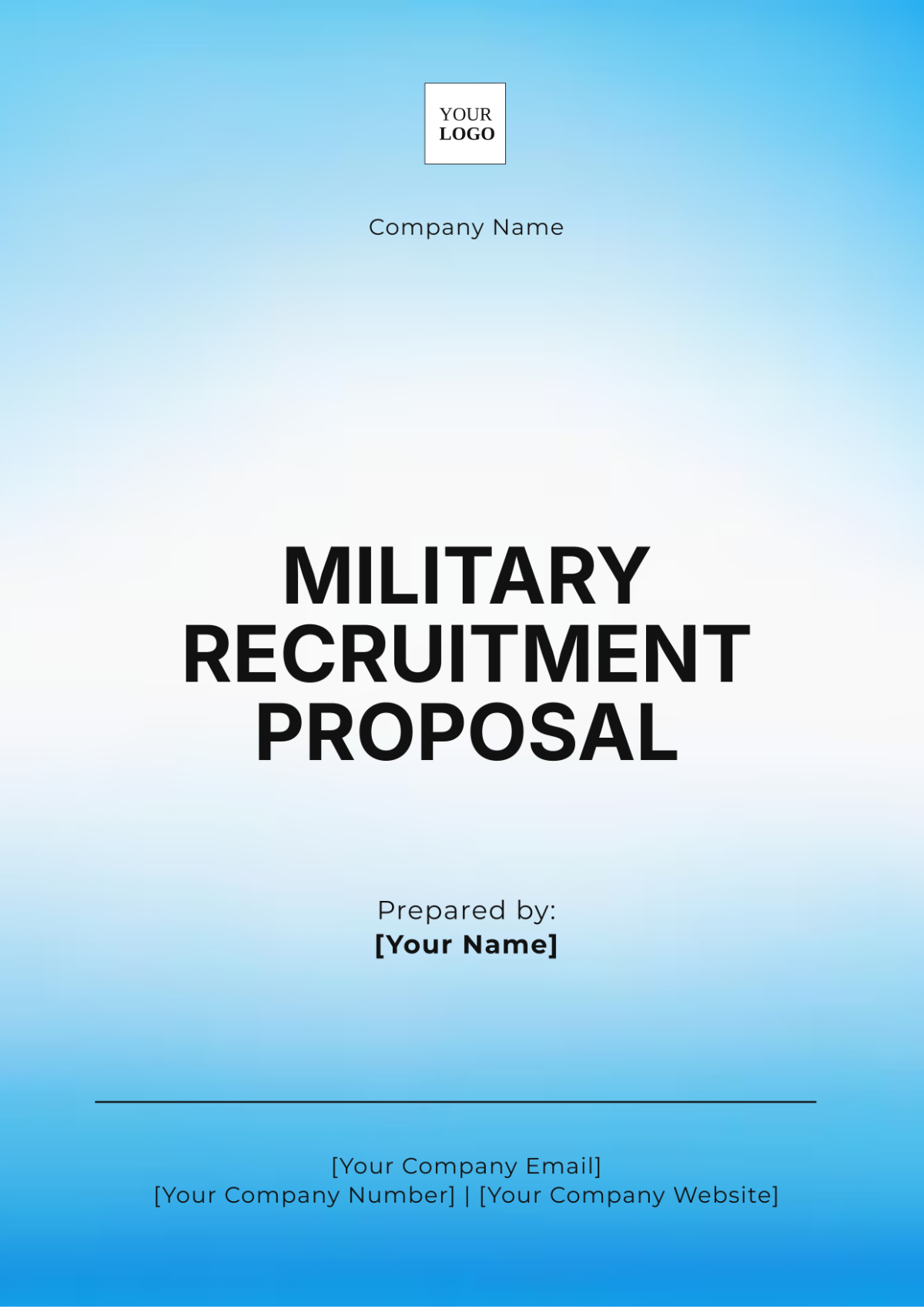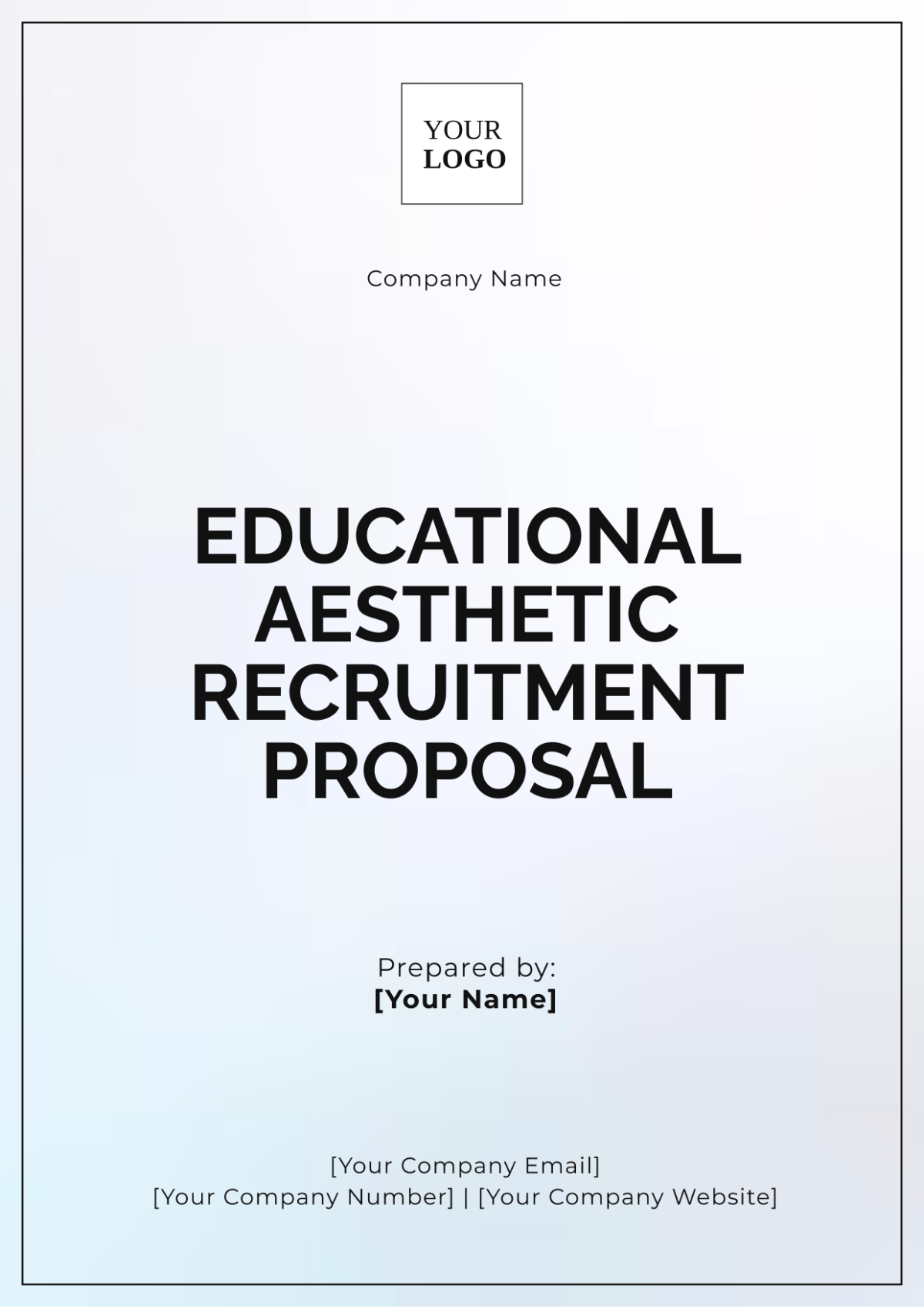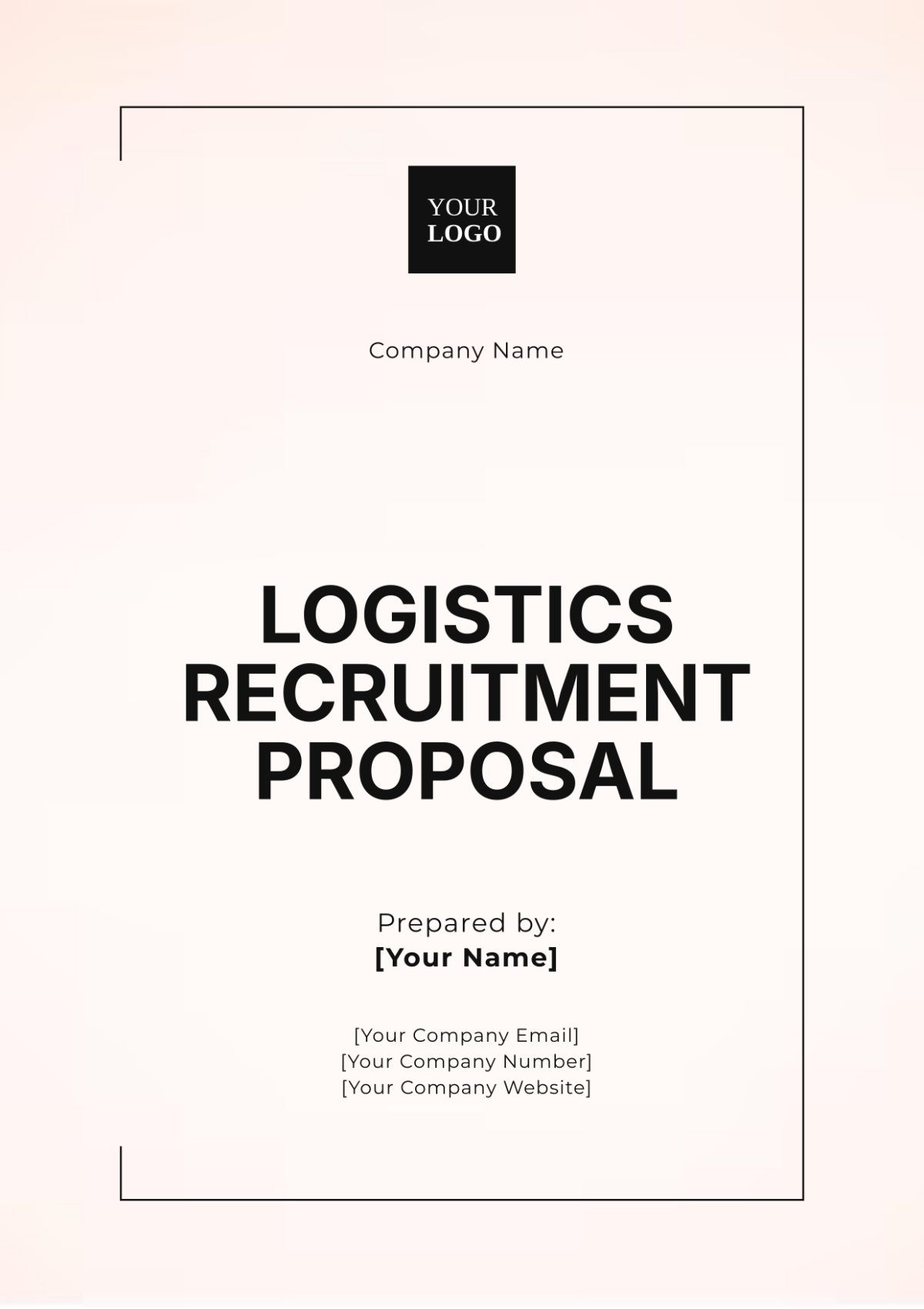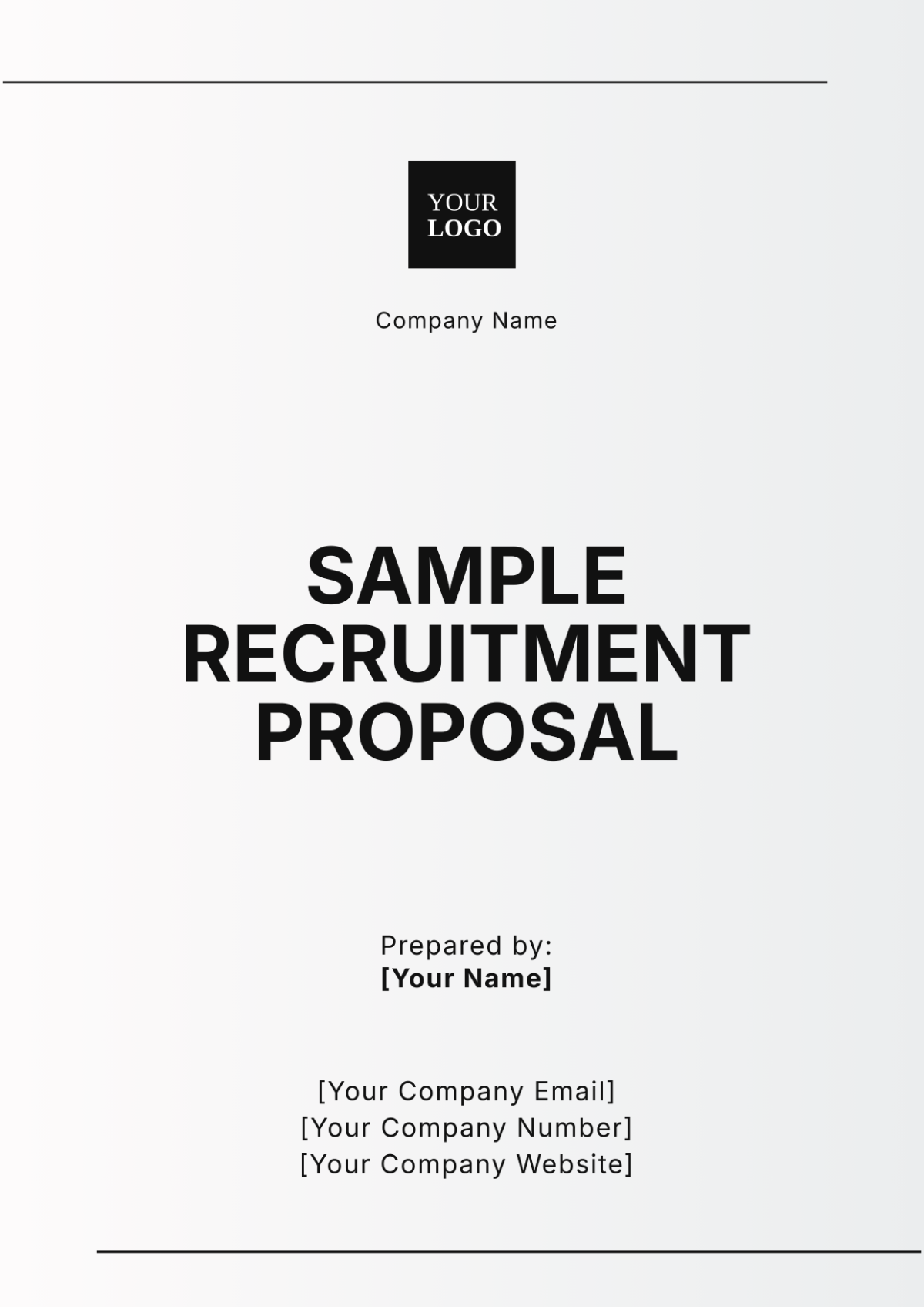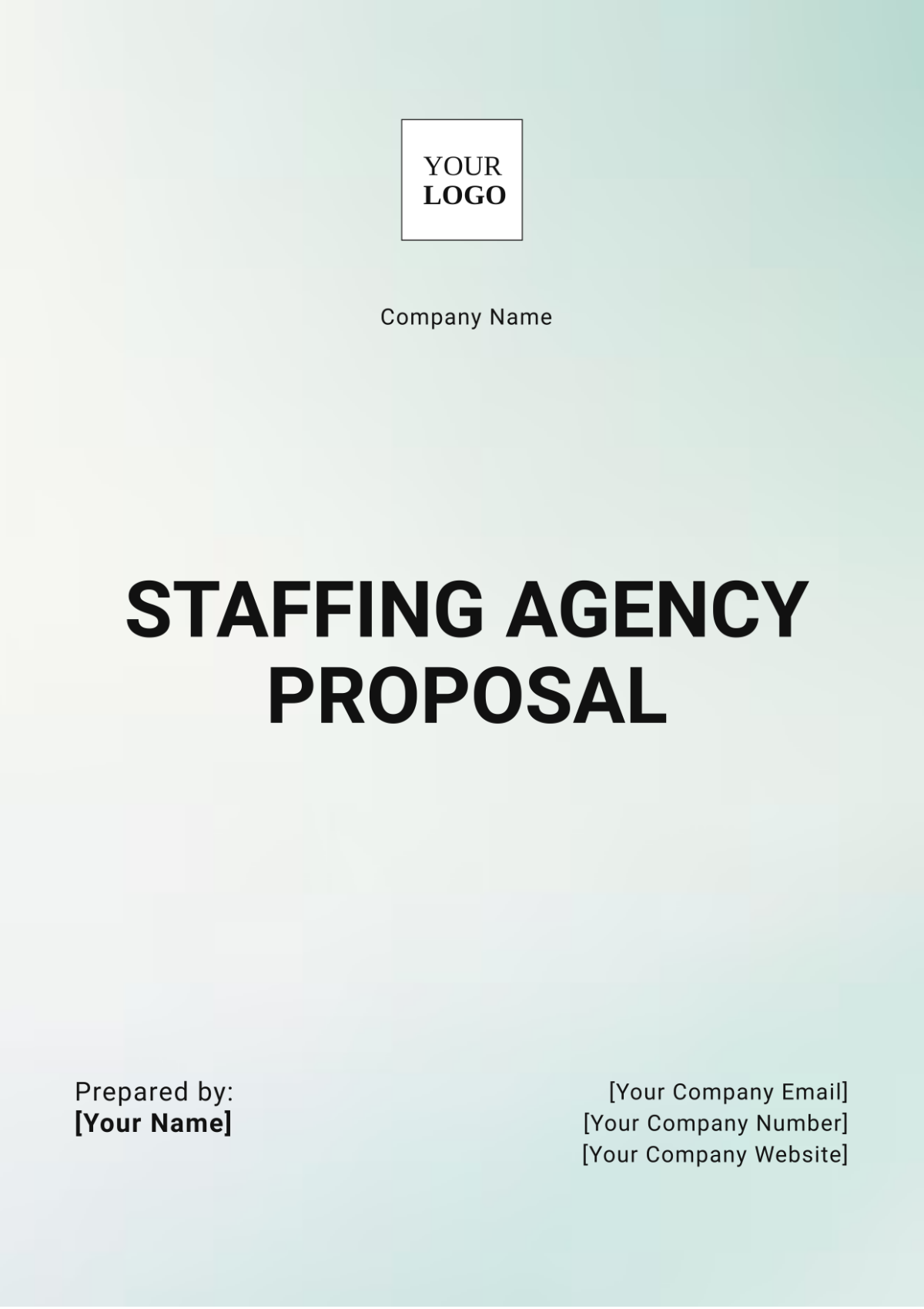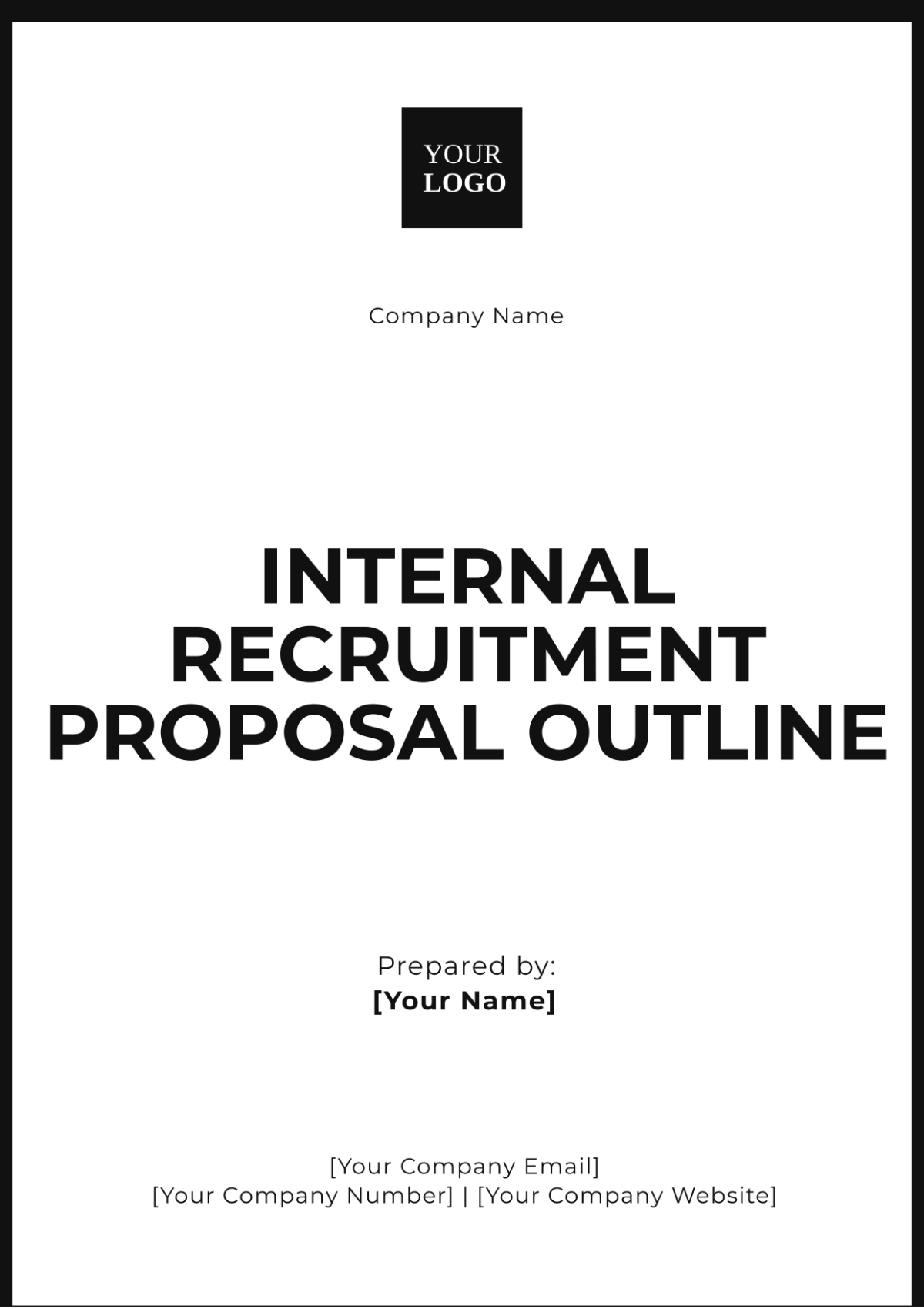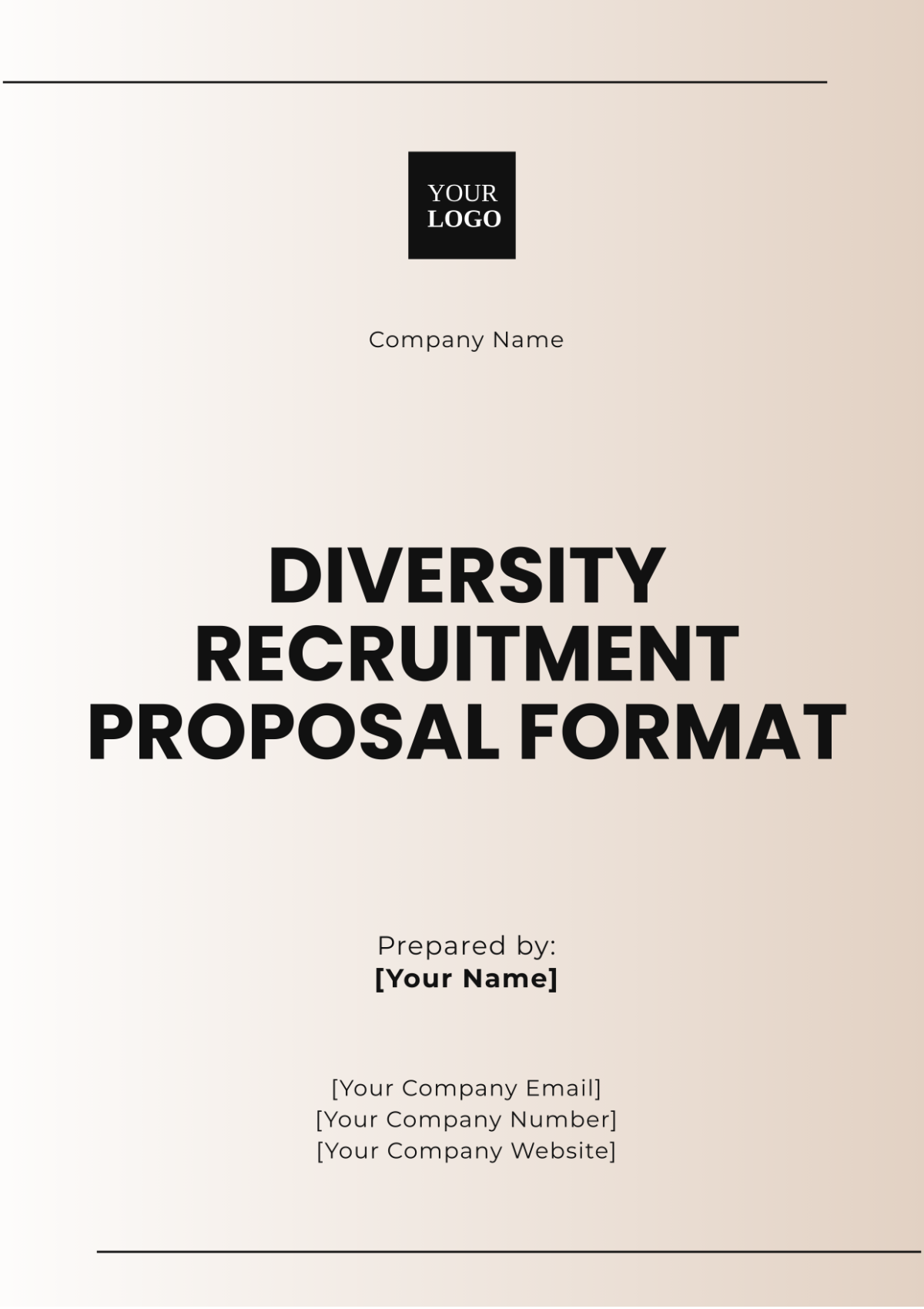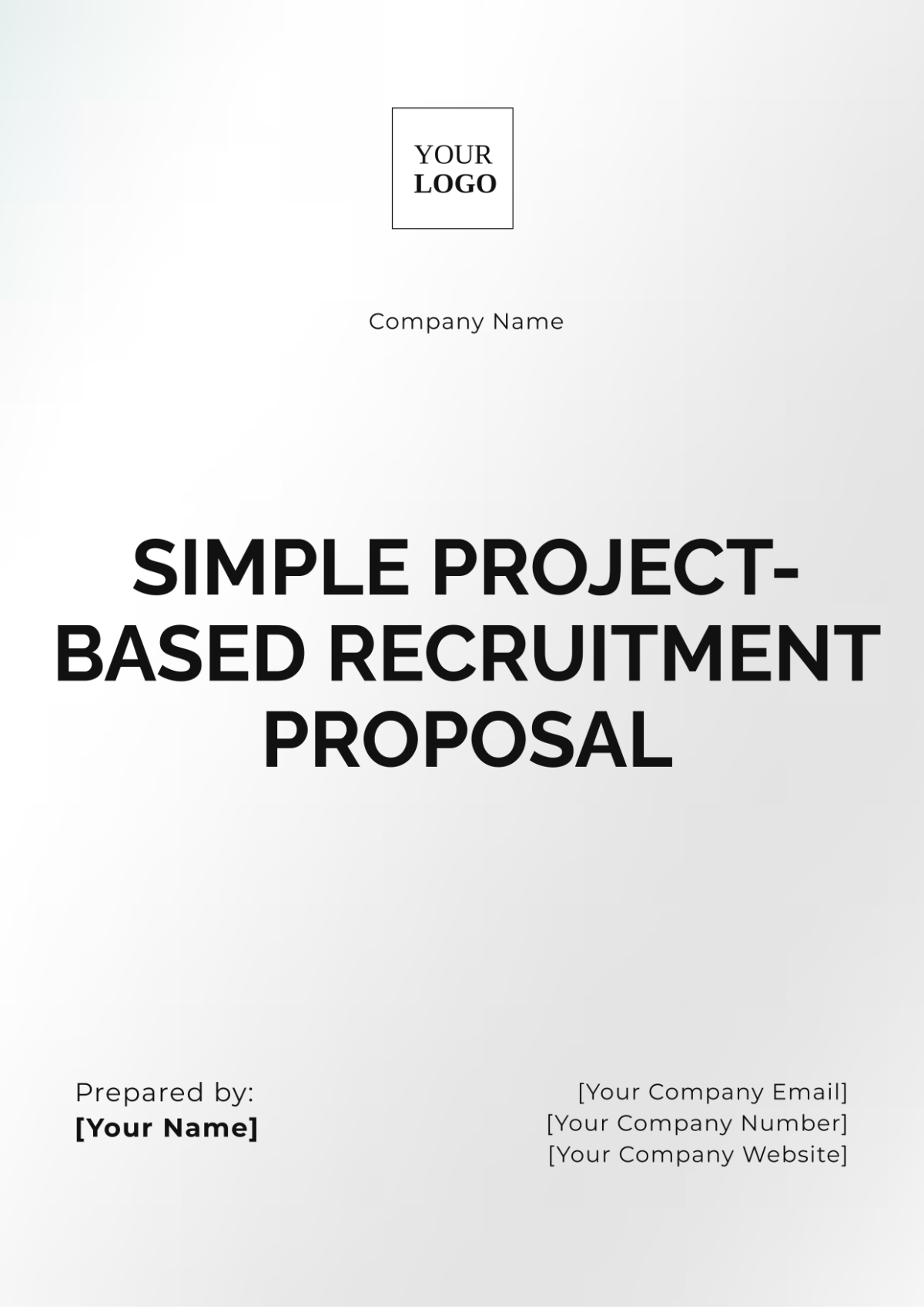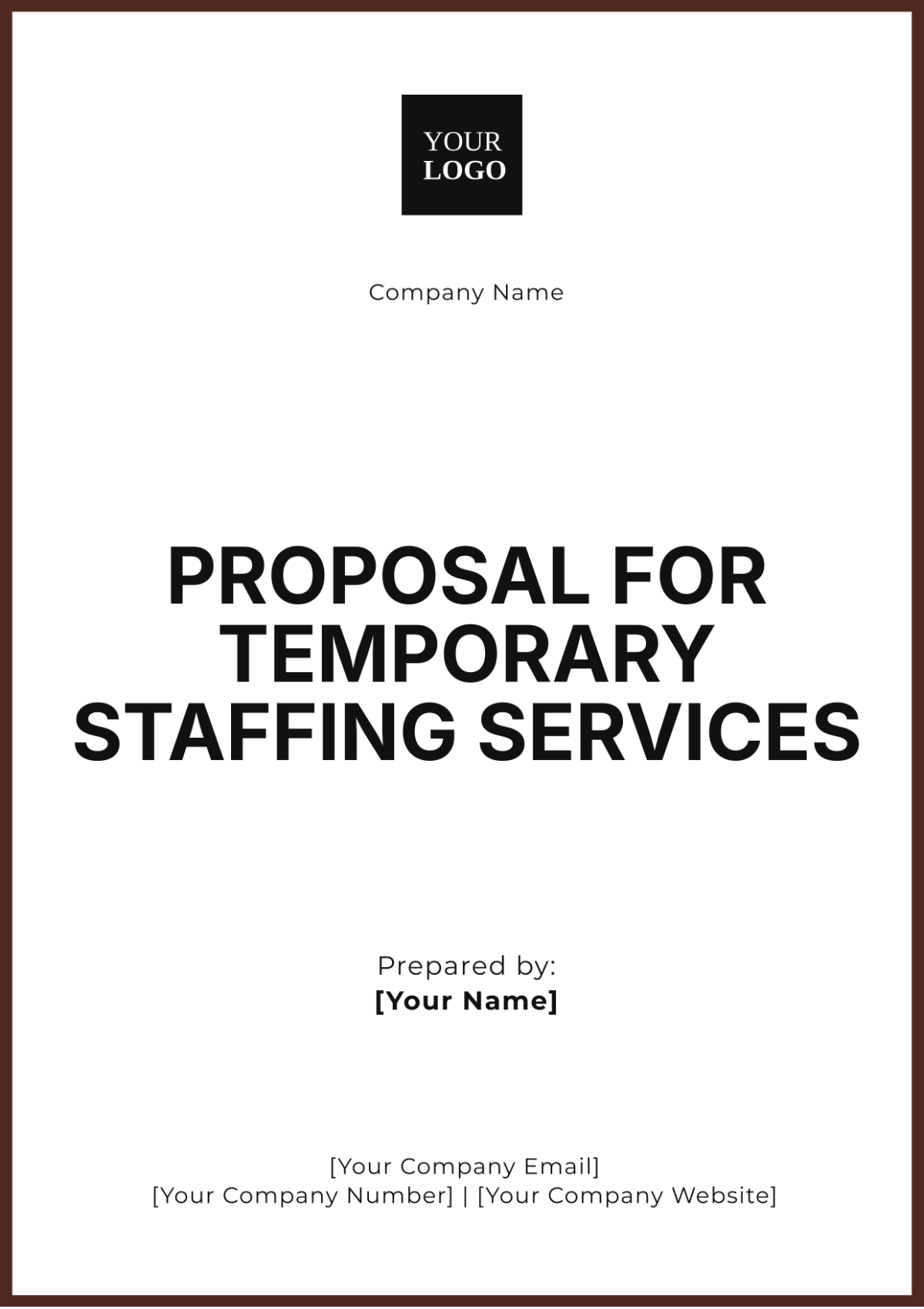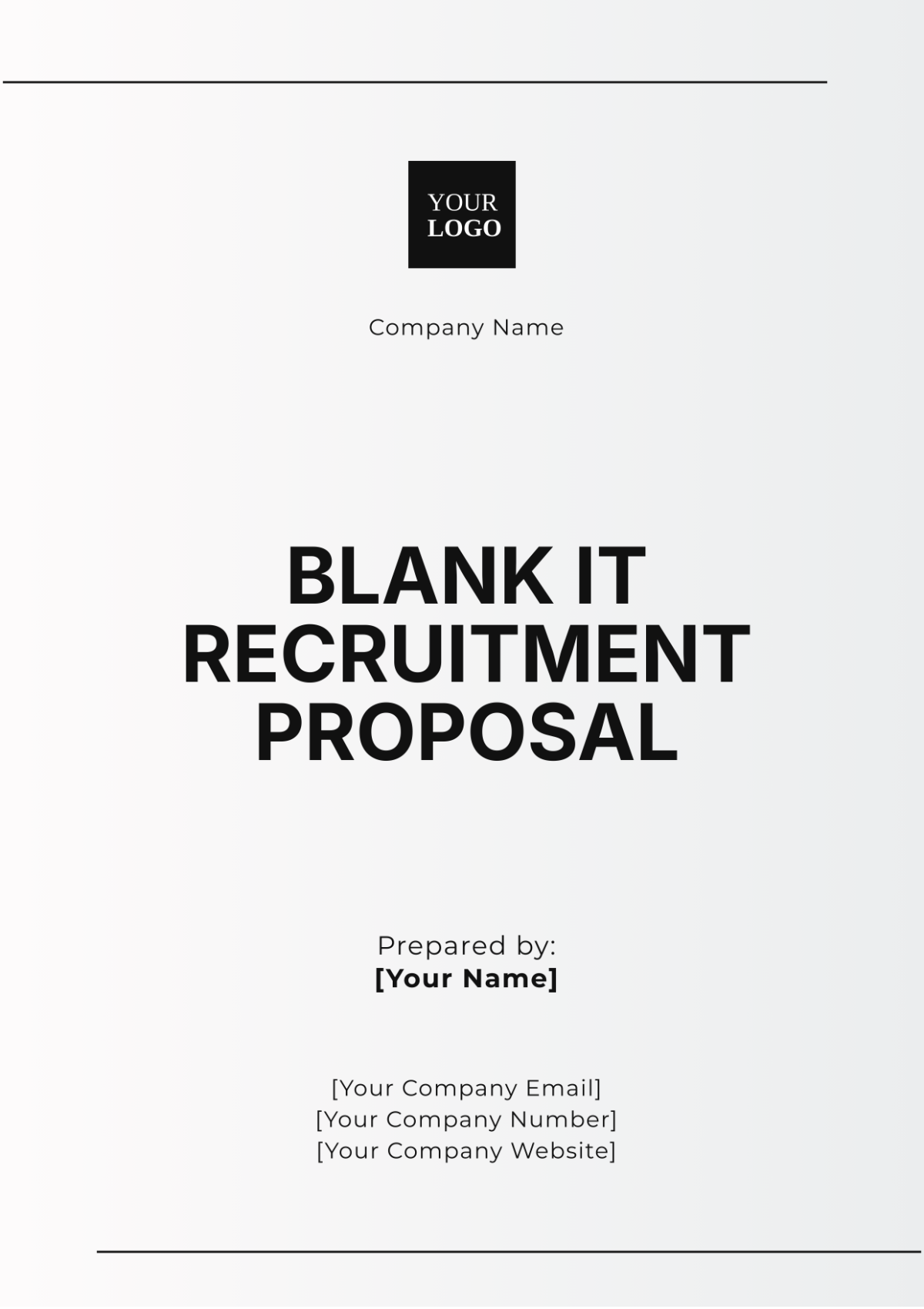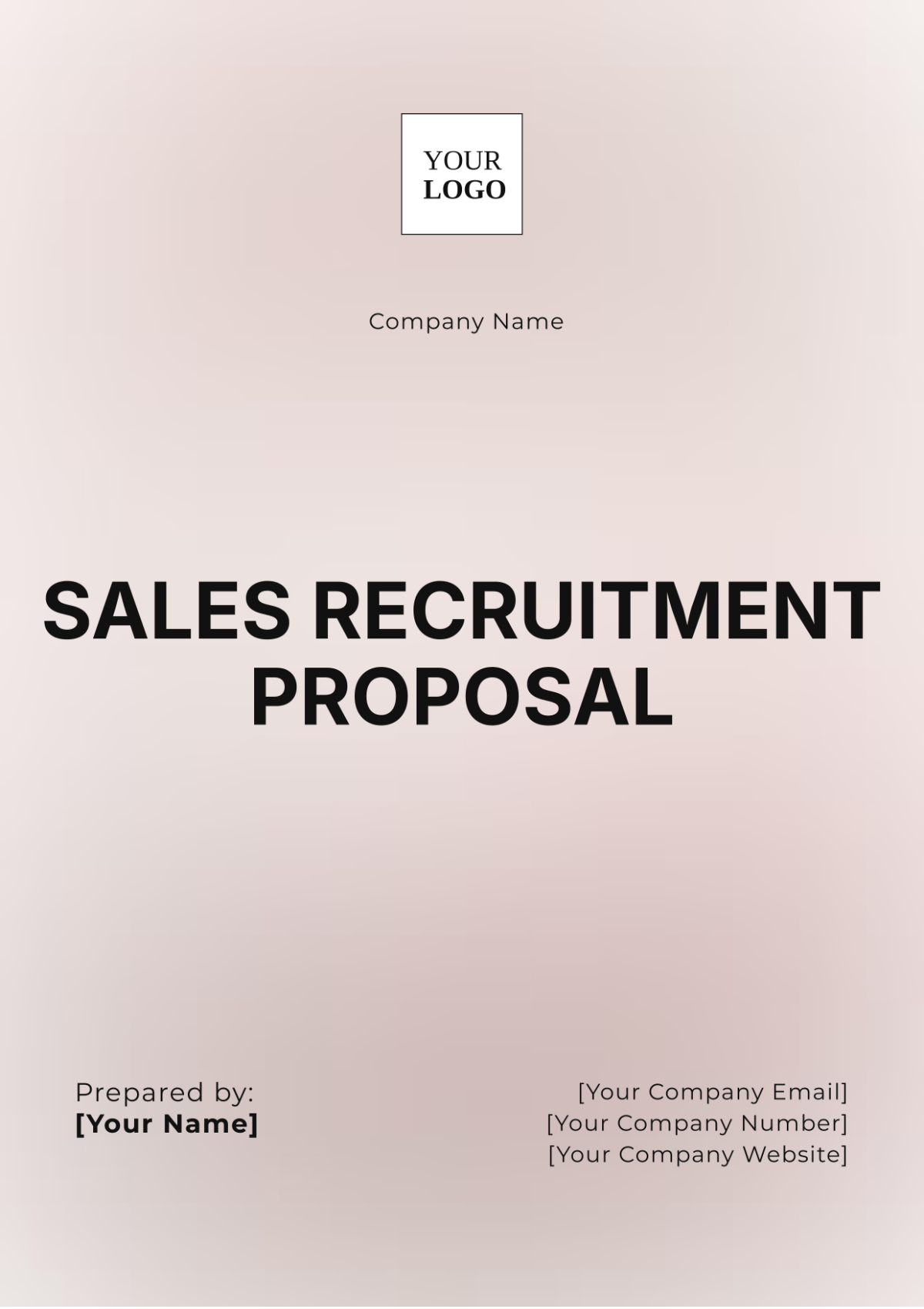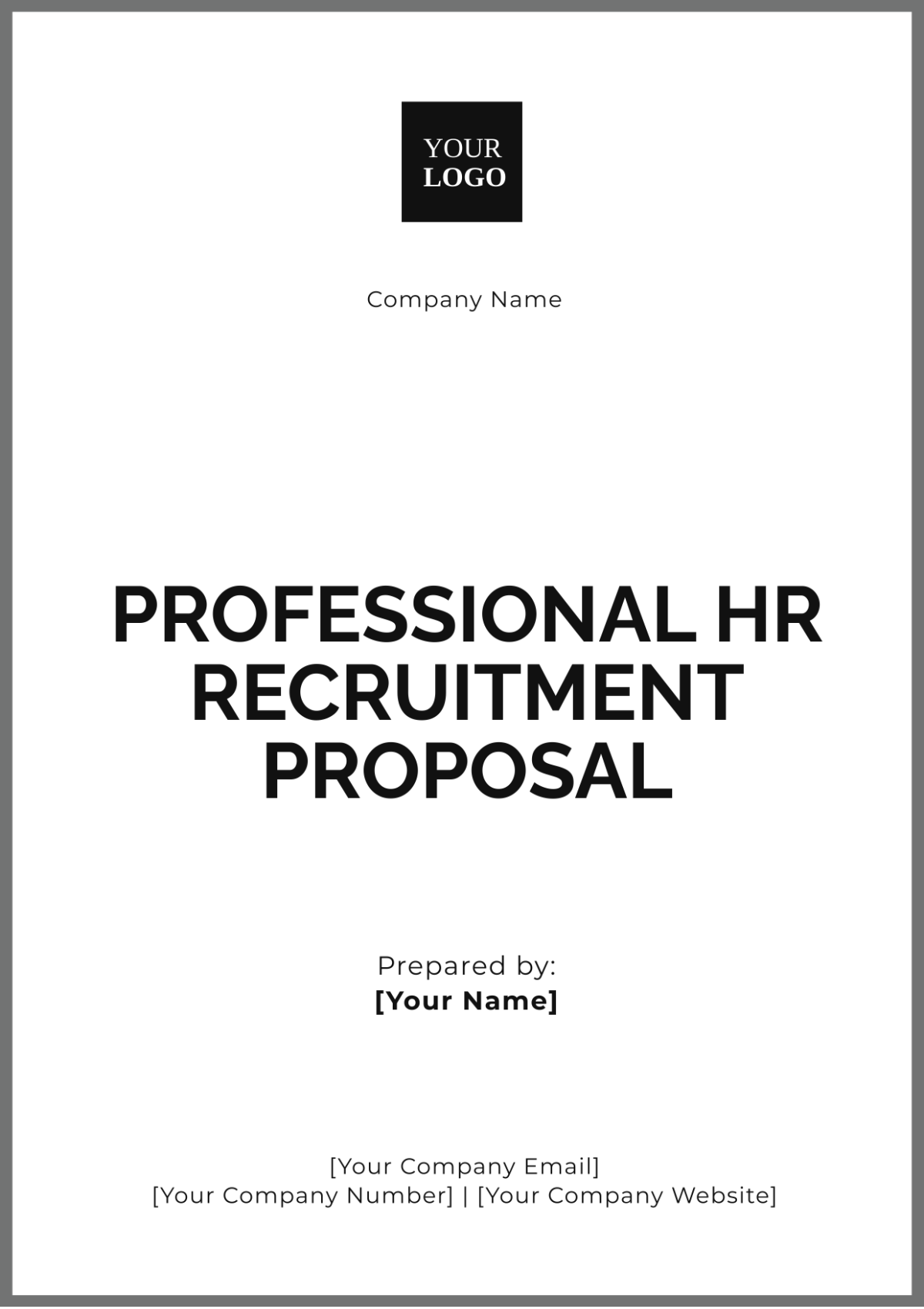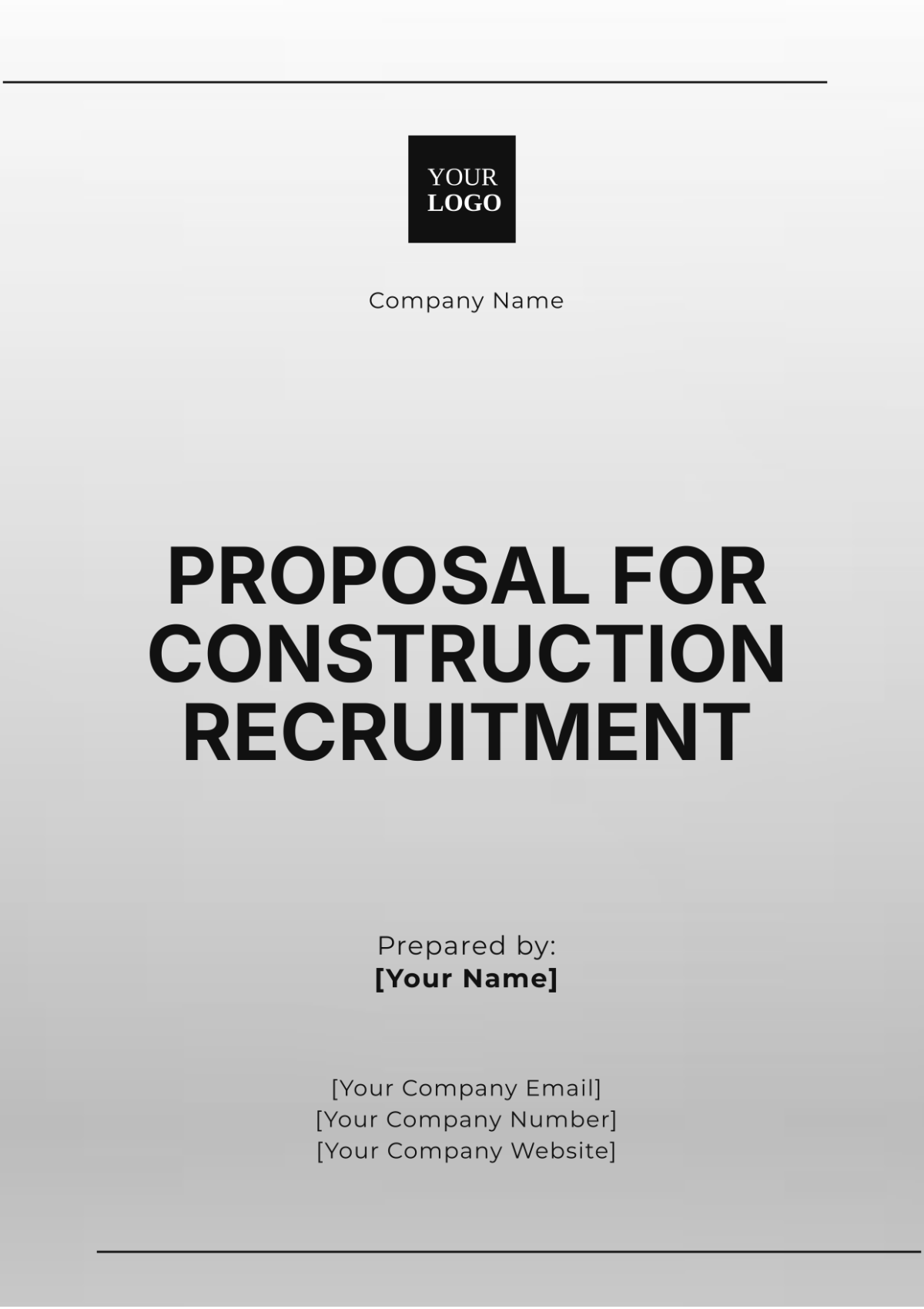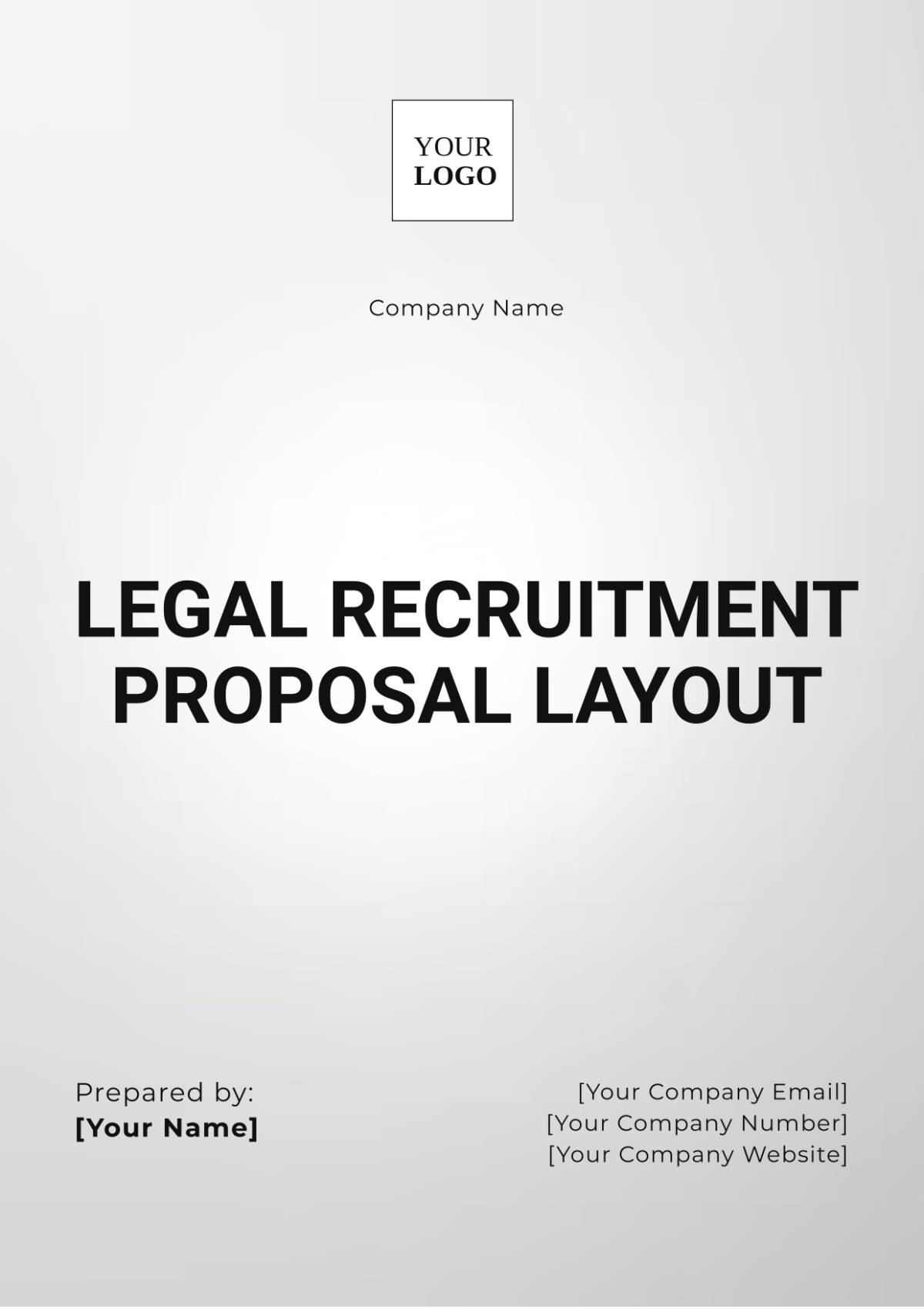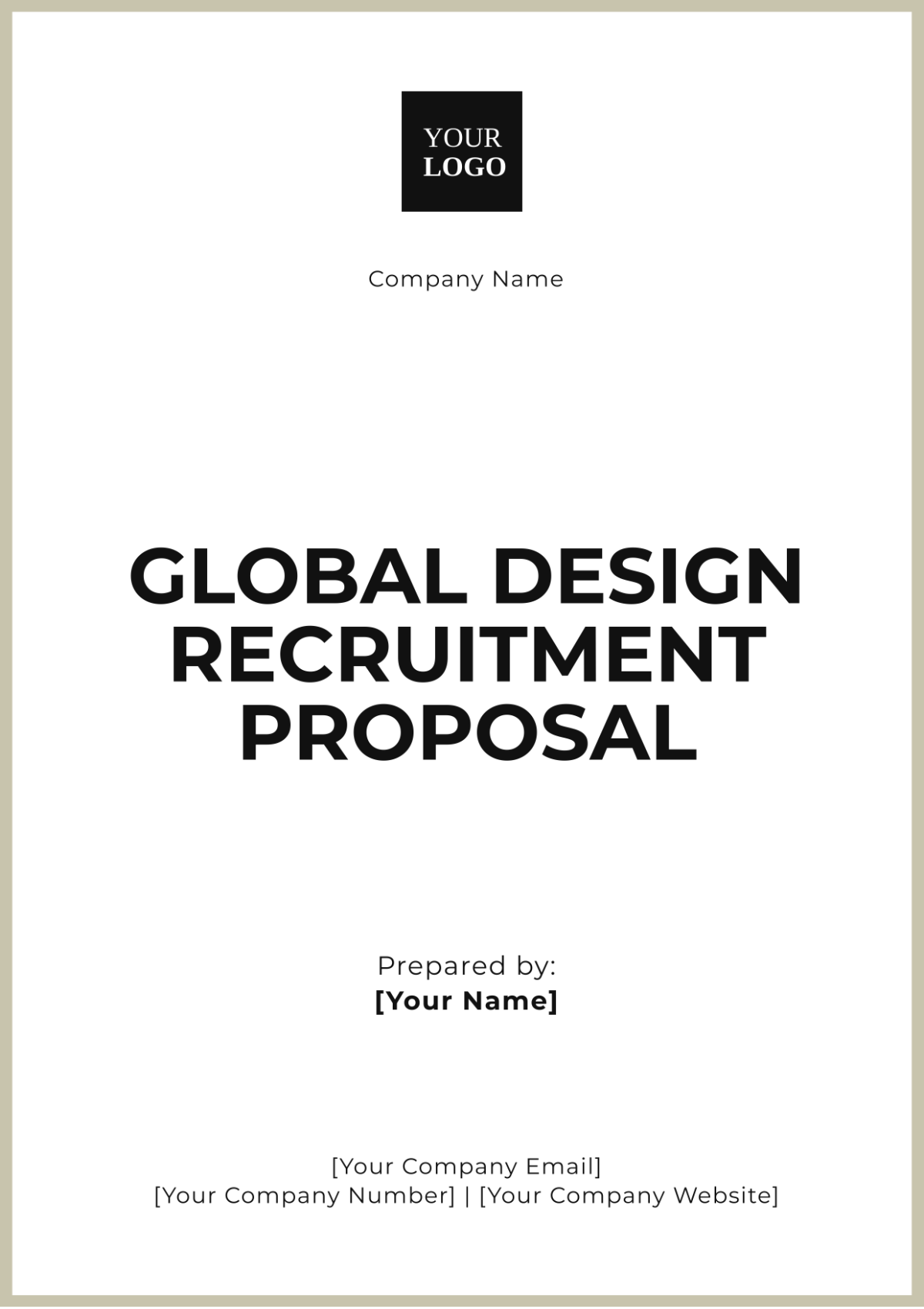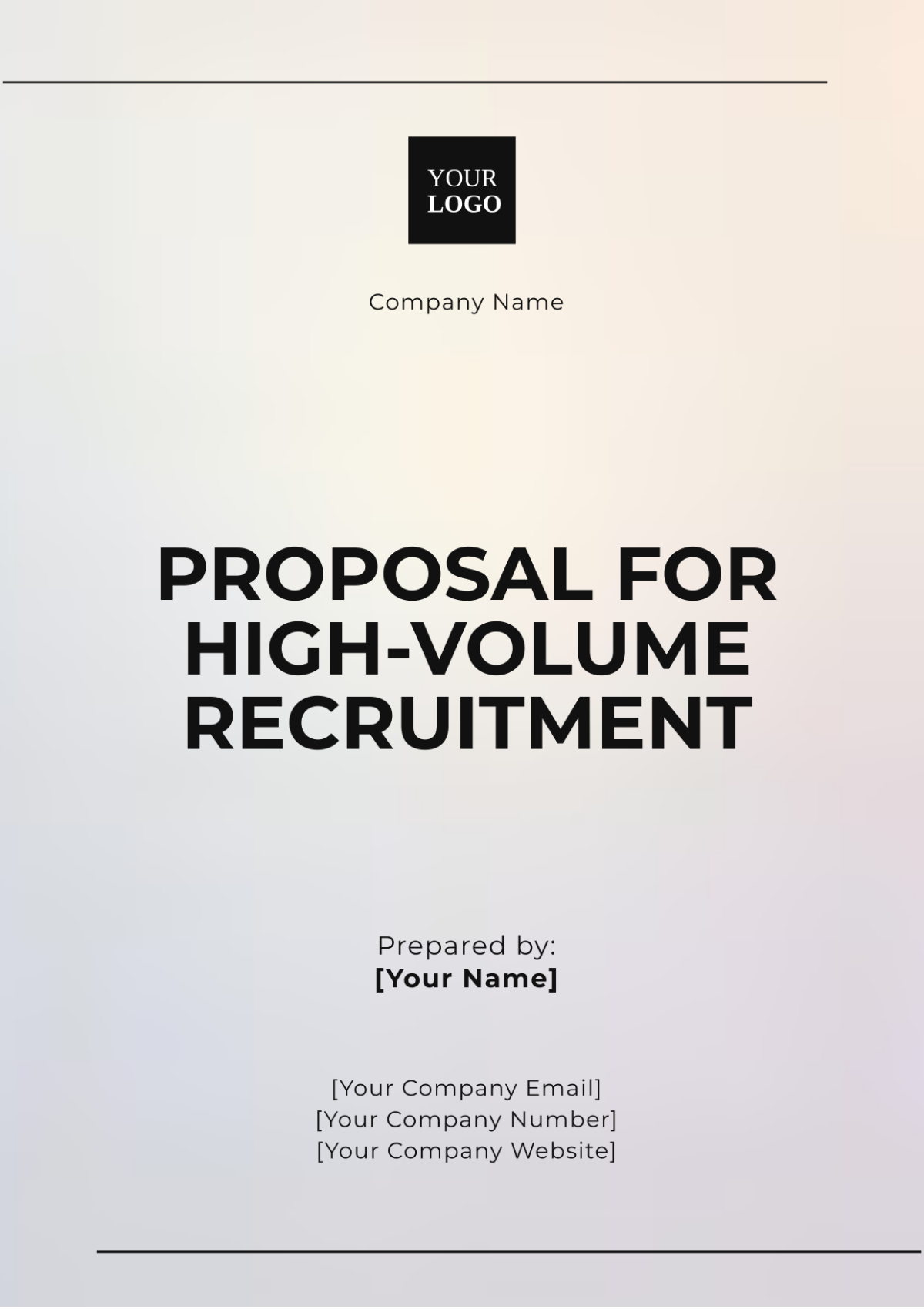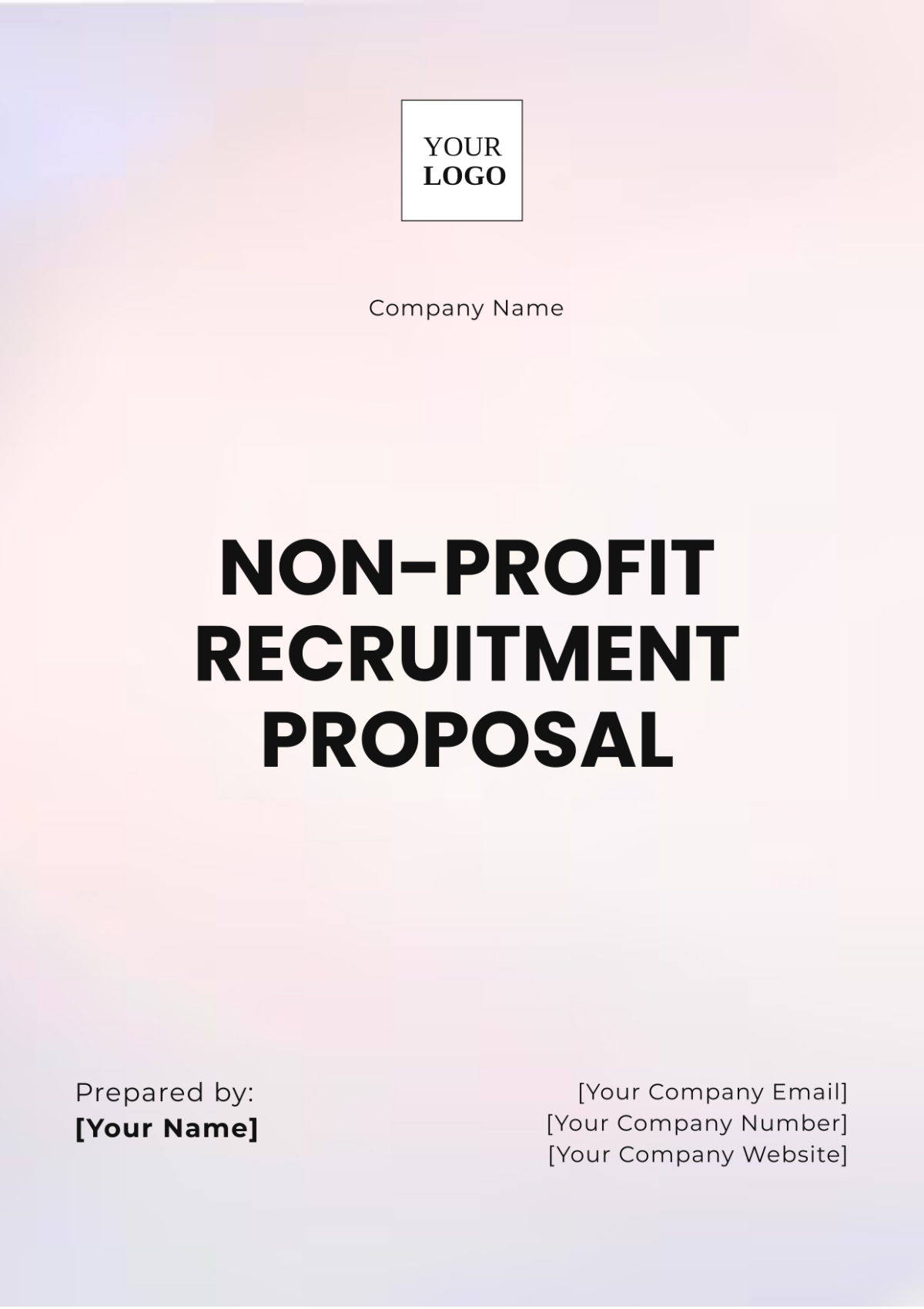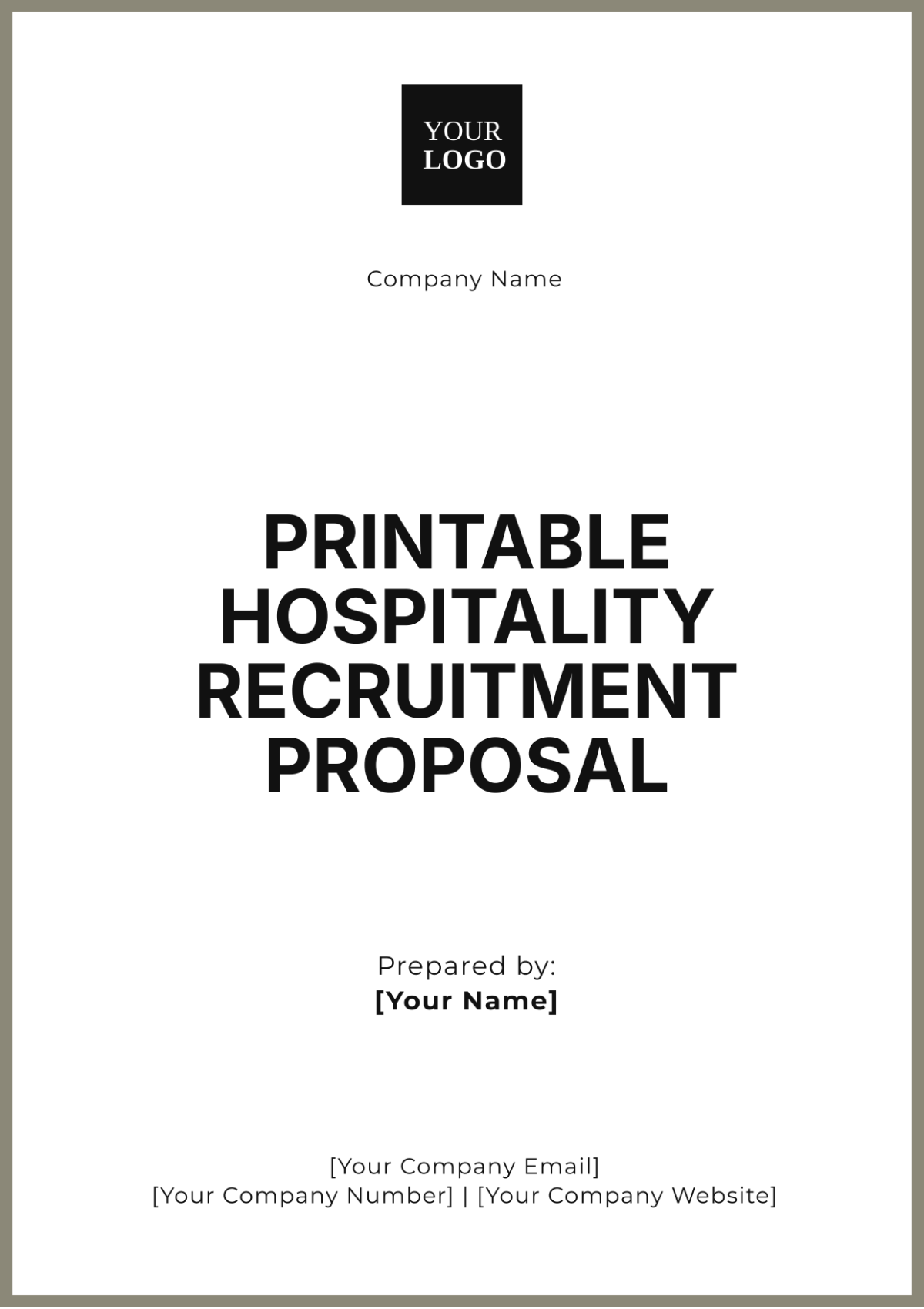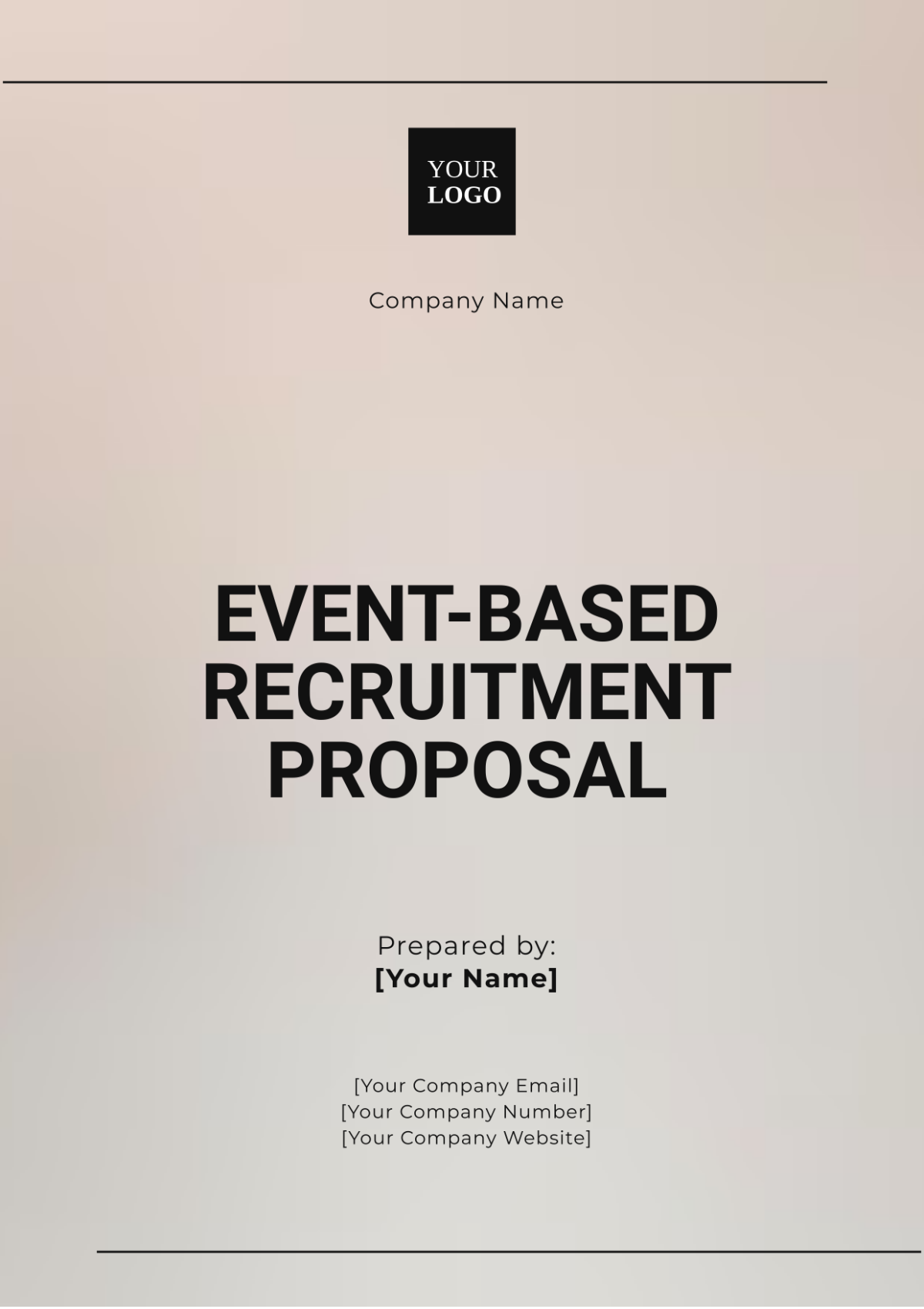Proposal for High-Volume Recruitment
Prepared by: [Your Name]
Date: [Date]
I. Executive Summary
This Proposal for High-Volume Recruitment outlines a comprehensive, futuristic strategy aimed at recruiting 500 new employees within the next six months. Leveraging cutting-edge technology, AI-driven recruitment tools, and strategic partnerships, we aim to meet our ambitious hiring goals while maintaining high standards of candidate quality and fit. By detailing our recruitment methods, timelines, and budget, this proposal aims to ensure an efficient, scalable, and successful onboarding process that aligns with the evolving workforce needs of the year 2050 and beyond.
The use of advanced recruitment tools such as AI-powered resume screening, virtual reality (VR) interviews, and automated onboarding systems will enable us to expedite the hiring process without compromising on quality. Our strategy also includes collaboration with top global recruitment agencies and industry-specific talent networks, ensuring a diverse and highly skilled workforce that reflects the technological advancements of the future.
II. Recruitment Strategy
A. Objectives
Our primary goal is to onboard 500 skilled professionals across various departments, including artificial intelligence development, robotics engineering, and digital infrastructure management. Our focus is on hiring candidates with relevant futuristic skills, such as quantum computing, AI ethics, space logistics, and renewable energy systems management, while ensuring that they resonate with our company's core values of innovation, sustainability, and ethics.
B. Sourcing Channels
Given the volume and the future-specific skill sets required, we will utilize a mix of traditional and futuristic sourcing channels to reach top talent:
Online Job Portals (e.g., LinkedIn, Glassdoor, QuantumJob): Popular job portals with advanced matching algorithms to target qualified professionals.
Company Careers Page (2050 version): Enhanced with AI-based chatbots for 24/7 applicant support and personalized job recommendations.
Employee Referral Programs: Offering incentives for employees to recommend candidates with future-ready skills.
Virtual Campus Recruitment: Partnering with leading universities (both physical and virtual campuses) offering courses in AI, space tech, and advanced robotics.
Social Media Platforms (e.g., HoloMedia, Twitter, LinkedIn): Targeted job ads using AI-powered algorithms to reach potential candidates through social media.
Recruitment Agencies: Engaging top global agencies specializing in futuristic and specialized recruitment for industries like AI, robotics, and clean energy.
C. Selection Process
The selection process will combine both traditional interviews and technologically advanced assessment tools to ensure a thorough evaluation of each candidate:
Initial AI Resume Screening: An AI-driven resume parser will filter applications based on required skills and qualifications, reducing screening time by 75%.
Preliminary VR Interviews: Candidates will participate in virtual reality interviews, allowing for a more dynamic and immersive assessment of their problem-solving abilities.
Skills and Technical Assessments: Candidates will undergo AI-driven assessments focusing on futuristic skills such as quantum problem-solving and AI governance.
Panel Interviews (Holographic): A holographic panel will conduct interviews to assess candidate fit, communication skills, and creativity.
Final Interviews with Hiring Managers: In-person or virtual interviews with department heads to finalize candidate selections.
III. Timeline
Our high-volume recruitment project will be divided into clear phases, ensuring that each stage of the process is completed on time:
Phase | Duration | Activity |
|---|---|---|
Phase 1 | Month 1 | Planning and Strategy Development: Detailed mapping of roles, sourcing channels, and finalizing tools. |
Phase 2 | Month 2-3 | Sourcing and Initial Screening: Launch of job ads, initial AI screening, and VR interviews. |
Phase 3 | Month 4-5 | Interviewing and Selection: Conduct holographic panel interviews and finalize hiring decisions. |
Phase 4 | Month 6 | Onboarding and Orientation: Automated onboarding with AI mentors and VR-based training modules for new hires. |
IV. Budget
The projected budget for the high-volume recruitment project in 2050 includes both traditional costs and those associated with the use of advanced technology and virtual tools:
Category | Estimated Cost |
|---|---|
Online Job Posting Fees | $25,000 |
Global Recruitment Agency Fees | $75,000 |
AI & VR Assessment Tools | $50,000 |
Marketing & Advertising (Future Channels) | $40,000 |
Virtual Campus Recruitment Events | $15,000 |
Miscellaneous Costs | $10,000 |
Total | $215,000 |
V. Tools and Resources
A. Technology and Software
We will incorporate the following advanced tools to streamline and optimize our recruitment process:
AI-Powered Applicant Tracking System (ATS): Tracks candidate applications in real-time, offering predictive analytics on candidate success rates.
Resume Parsing Software: Scans and filters resume, prioritizing candidates with future-ready skills like AI ethics and space logistics.
Virtual Reality (VR) Interview Platforms: Enables immersive interviews, simulating real-world job challenges.
Quantum-Based Online Assessment Tools: Advanced skills tests designed for fields like quantum computing and AI development.
HR Analytics and Reporting Tools: Provides in-depth metrics and forecasts based on real-time data.
B. Human Resources
To execute this high-volume recruitment drive, the following human resources personnel will be involved:
Recruitment Manager: Oversees the recruitment process and manages strategy.
Senior Recruiters: Lead the sourcing and selection processes.
Junior Recruiters: Assist with screening and candidate communication.
HR Coordinators: Handle onboarding and logistics.
Technical Assessment Specialists: Evaluate candidates’ futuristic technical skills and competencies.
VI. Metrics and KPIs
To measure the success of our recruitment efforts, we will track the following futuristic metrics:
Time-to-Hire: Average time from job posting to candidate acceptance. Target: 30 days.
Cost-per-hire: Total expenditure per hired candidate. Target: $2,500.
Application Completion Rate: Percentage of candidates who complete all interview and assessment stages. Target: 80%.
Offer Acceptance Rate: Percentage of candidates who accept job offers out of total offers made. Target: 90%.
Employee Retention Rate: Percentage of new hires remaining with the company after 6 months and 1 year. Target: 85% retention after 1 year.
Candidate Satisfaction Score: Feedback on candidate experience, measured via AI surveys post-recruitment. Target: 4.5/5.
